Tyrosine Kinase
- IGFBR(1)
- Bcr-Abl(73)
- Ack1(4)
- Axl(6)
- ALK(61)
- BMX Kinase(4)
- Broad Spectrum Protein Kinase Inhibitor(11)
- c-FMS(35)
- c-Kit(65)
- c-MET(91)
- c-RET(7)
- CSF-1R(3)
- DDR1/DDR2 Receptor(1)
- EGFR(251)
- EphB4(2)
- FAK(34)
- FGFR(104)
- FLT3(102)
- HER2(19)
- IGF1R(33)
- Insulin Receptor(45)
- IRAK(32)
- ITK(12)
- Lck(2)
- LRRK2(23)
- PDGFR(117)
- PTKs/RTKs(5)
- Pyk2(6)
- ROR(41)
- Spleen Tyrosine Kinase (Syk)(35)
- Src(105)
- Tie-2 (3)
- Trk(37)
- VEGFR(203)
- Kinase(0)
- Discoidin Domain Receptor(15)
- DYRK(26)
- Ephrin Receptor(13)
- ROS(15)
- RET(34)
- TAM Receptor(28)
Products for Tyrosine Kinase
- Cat.No. Product Name Information
-
GC17637
CTX0294885
Pan-kinase inhibitor
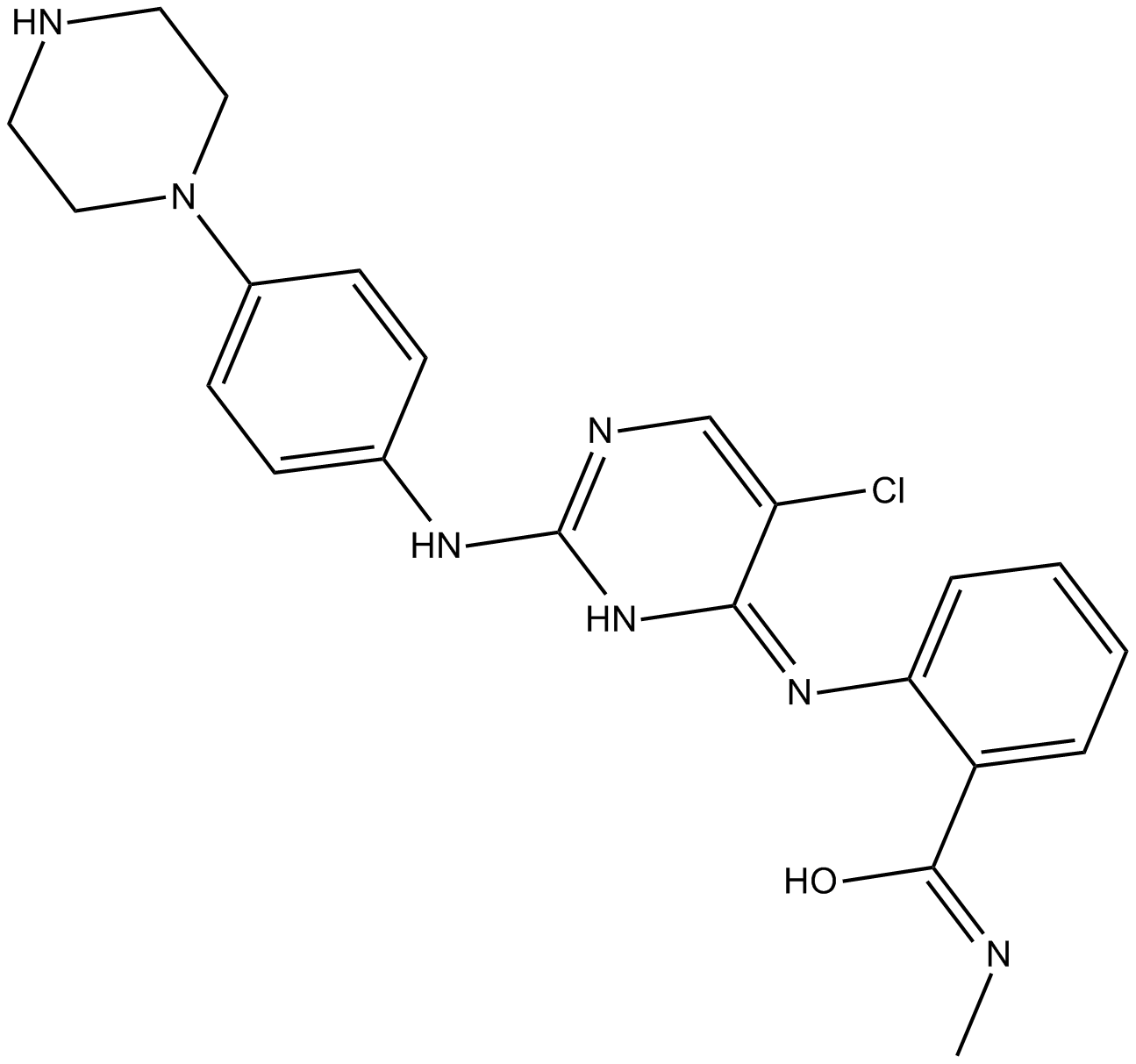
-
GC16008
CUDC-101
A multi-target inhibitor of HDACs, EGFR, and HER2

-
GC38180
Cyasterone
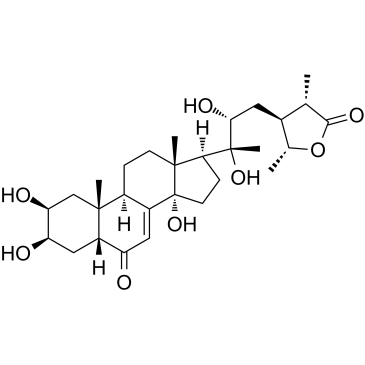
-
GC13780
Cyclotraxin B
TrkB receptor antagonist

-
GC16731
CZC 54252 hydrochloride
CZC 54252 hydrochloride is a potent and selective LRRK2 inhibitor with IC50s of 1.28 nM and 1.85 nM for wild-type and G2019S LRRK2, respectively.
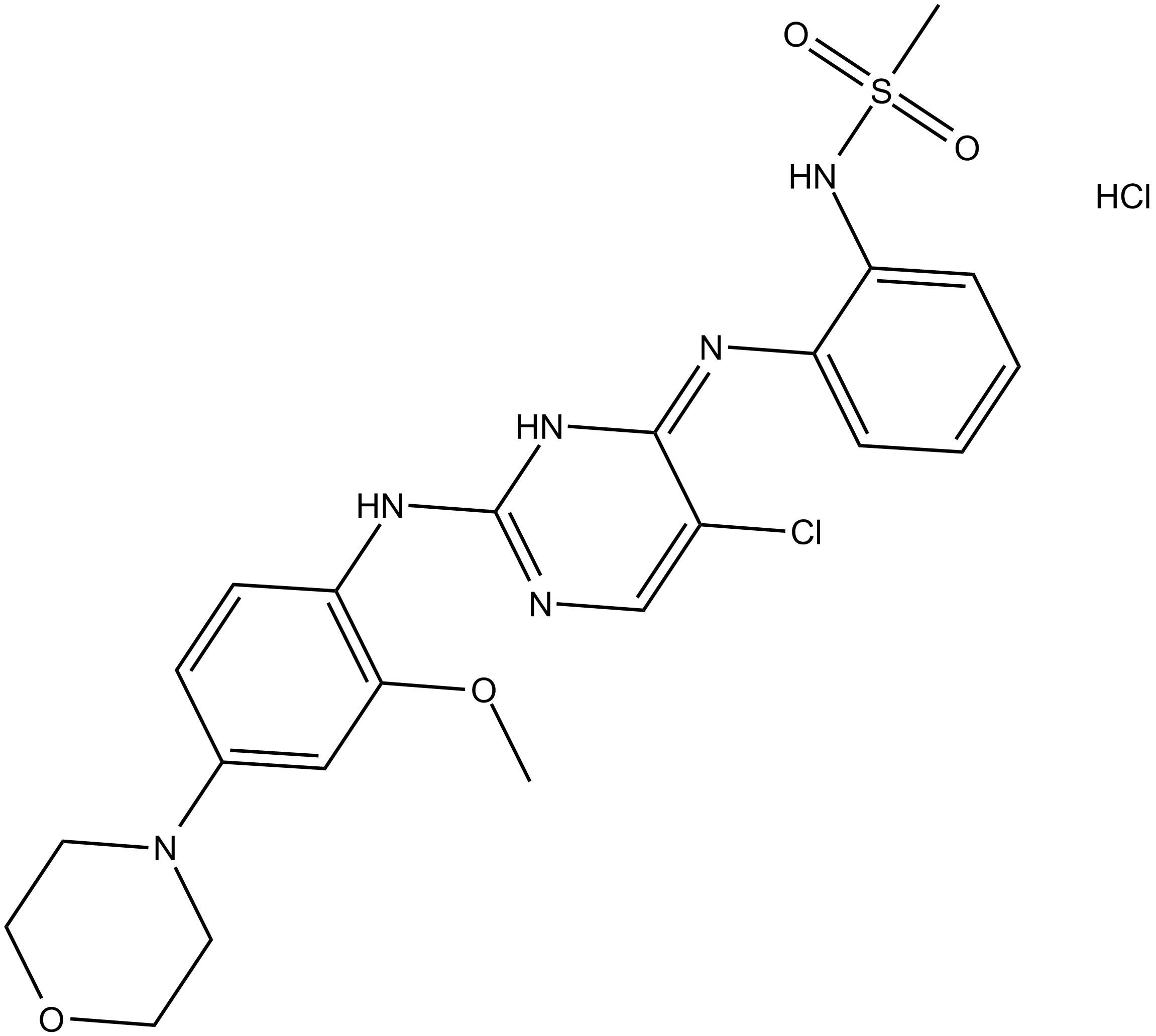
-
GC16038
CZC-25146
LRRK2 inhibitor
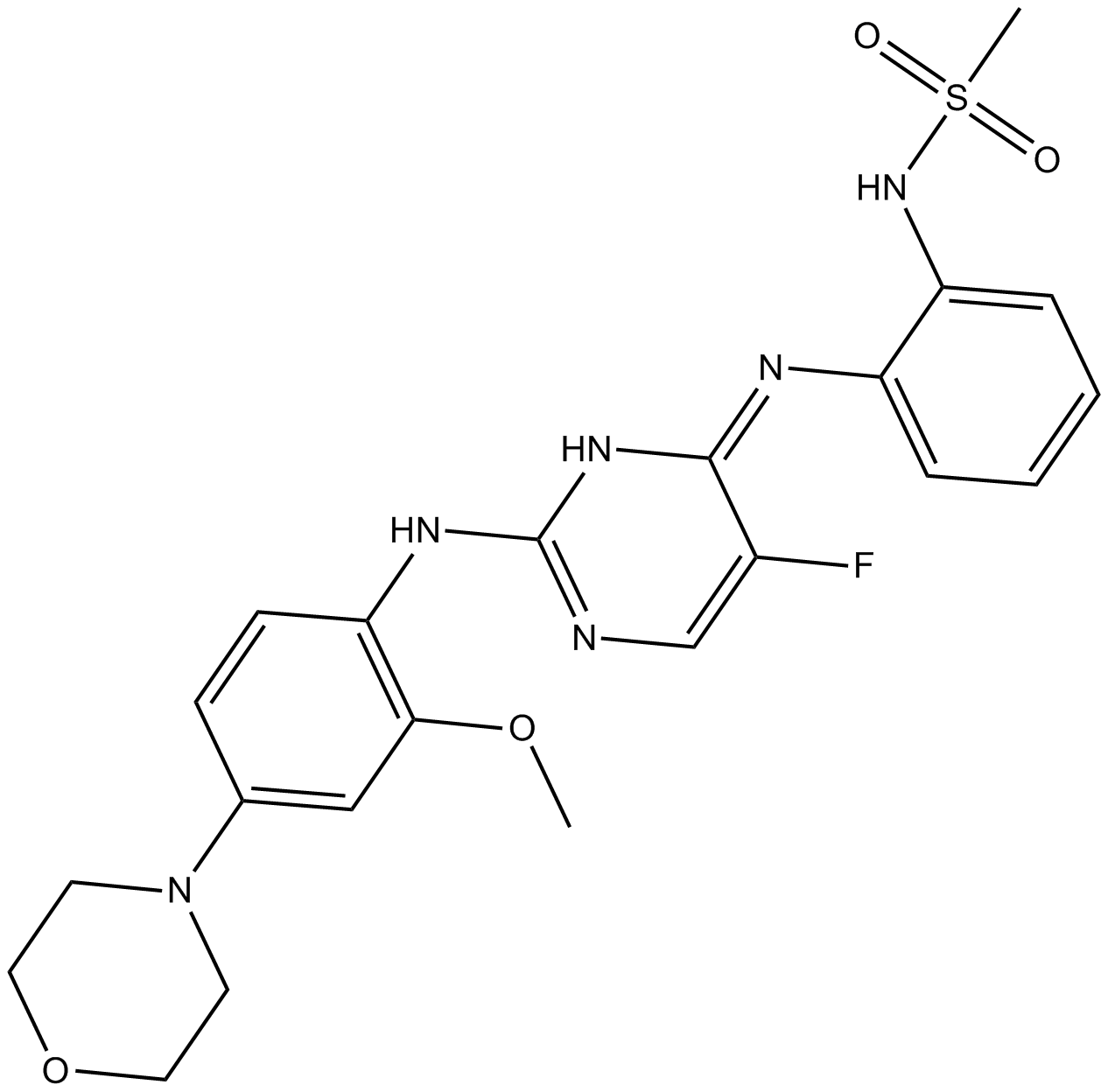
-
GC35792
CZC-25146 hydrochloride
CZC-25146 hydrochloride is a potent LRRK2 inhibitor with IC50 values of 4.76 nM and 6.87 nM for wild-type LRRK2 and G2019S LRRK2, respectively.
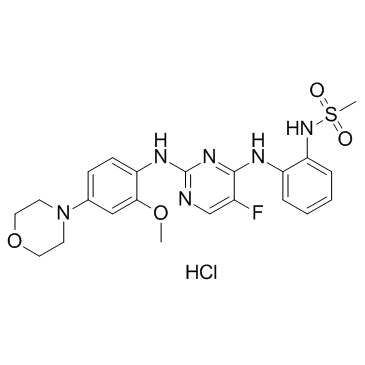
-
GC33351
CZC-8004 (CZC-00008004)
CZC-8004 (CZC-00008004) (CZC-00008004), an aminopyrimidine, is a pan-kinase inhibitor. CZC-8004 (CZC-00008004) can bind a range of tyrosine kinases, including EGFR and VEGFR2 with IC50 values of 650 and 437 nM, respectively.
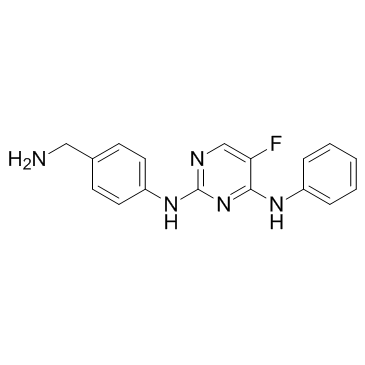
-
GC43433
D-Glucosamine-6-sulfate
D-Glucosamine-6-sulfate is a naturally occurring glycosaminoglycan.

-
GC62712
DA-JC4
DA-JC4 is a dual GLP-1/GIP receptor agonist and can be used for the research of neurological disease and insulin signaling pathways.
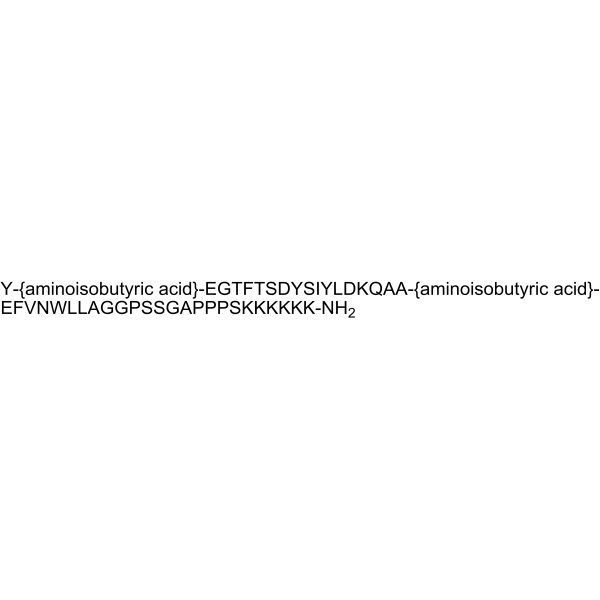
-
GC10225
Dacomitinib (PF299804, PF299)
Dacomitinib (PF299804, PF299) (PF-00299804) is a specific and irreversible inhibitor of the ERBB family of kinases with IC50s of 6 nM, 45.7 nM and 73.7 nM for EGFR, ERBB2, and ERBB4, respectively.
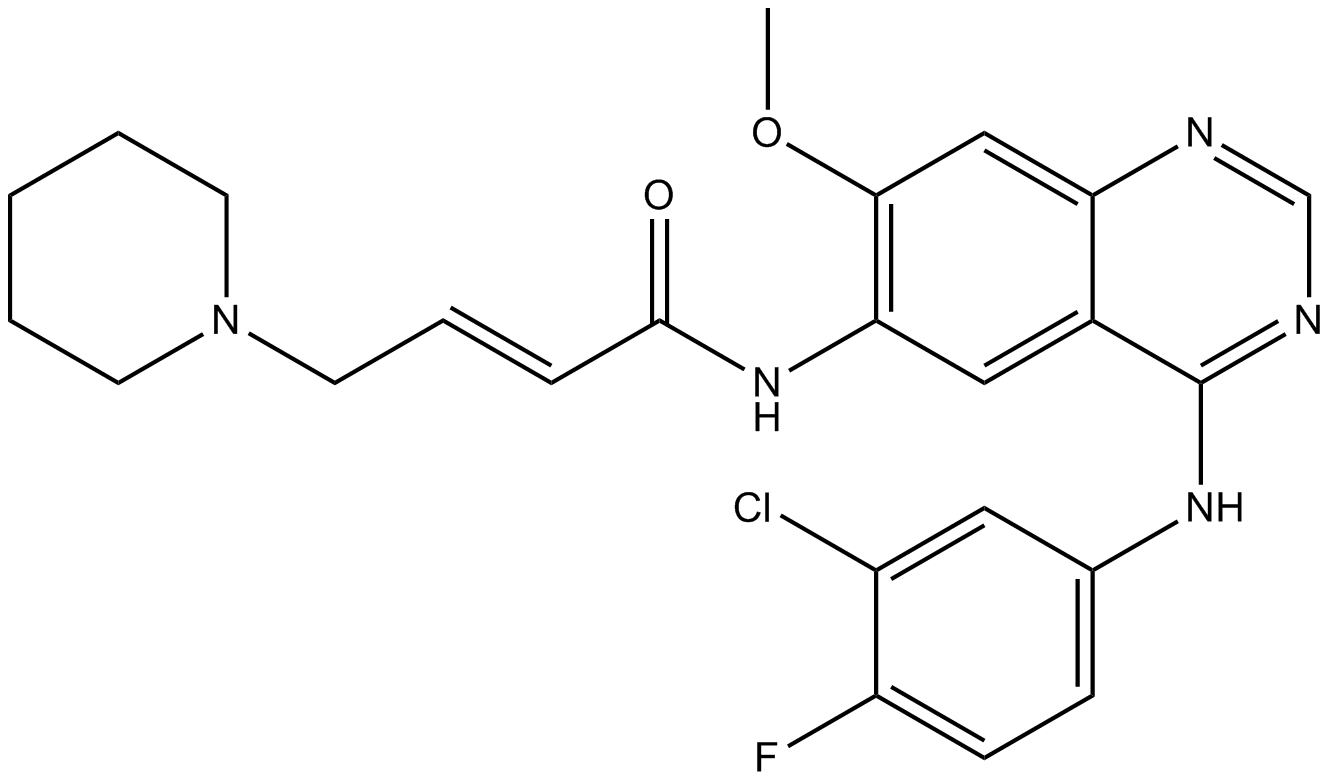
-
GC15211
Damnacanthal
p56lck tyrosine kinase inhibitor

-
GC15217
Danusertib (PHA-739358)
A pan-Aurora kinase and Abl inhibitor
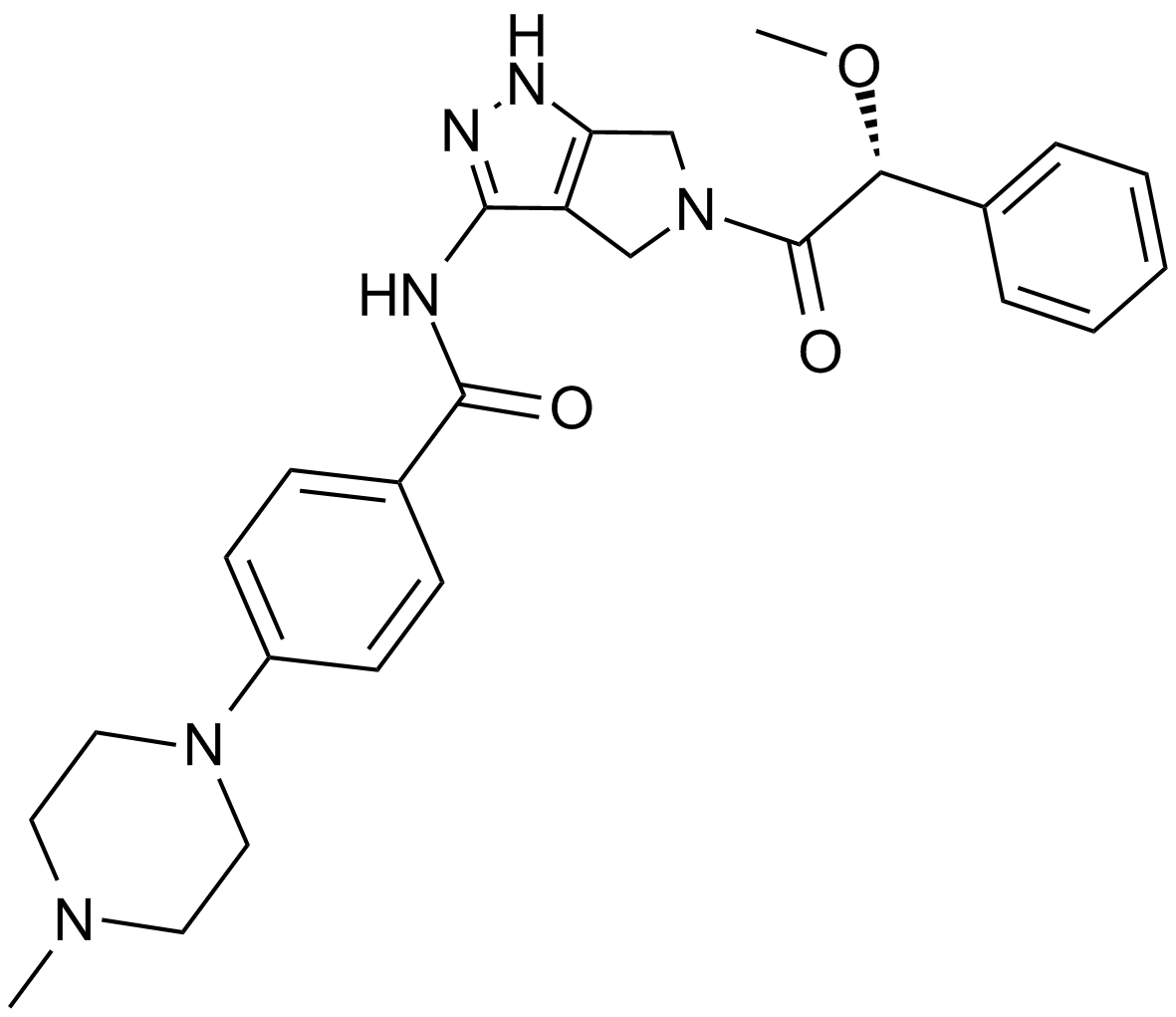
-
GN10336
Daphnetin
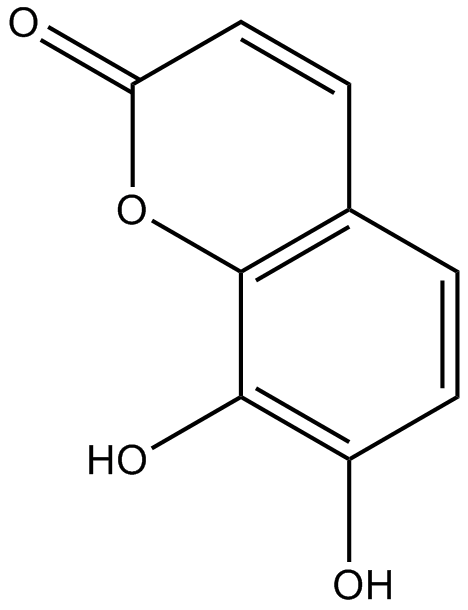
-
GC15568
Dasatinib (BMS-354825)
An inhibitor of Abl and Src

-
GC35812
Dasatinib hydrochloride
A potent and dual AblWT/Src inhibitor
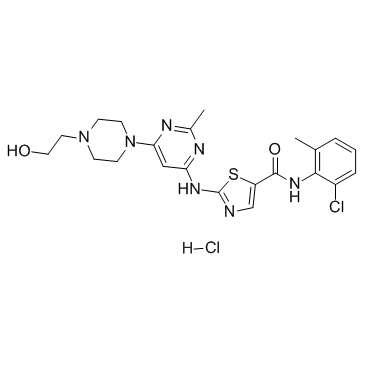
-
GC15884
Dasatinib Monohydrate
Inhibitor of ABL, SRC, KIT, PDGFR, and other tyrosine kinases.

-
GC45687
Dasatinib N-oxide
A major metabolite of dasatinib
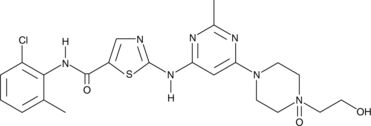
-
GC62569
DBPR112
DBPR112 is an orally active furanopyrimidine-based EGFR inhibitor with IC50s of 15 nM and 48 nM for EGFRWT and EGFRL858R/T790M, respectively. DBPR112 can occupy the ATP-binding site. DBPR112 has significant antitumor efficacy.
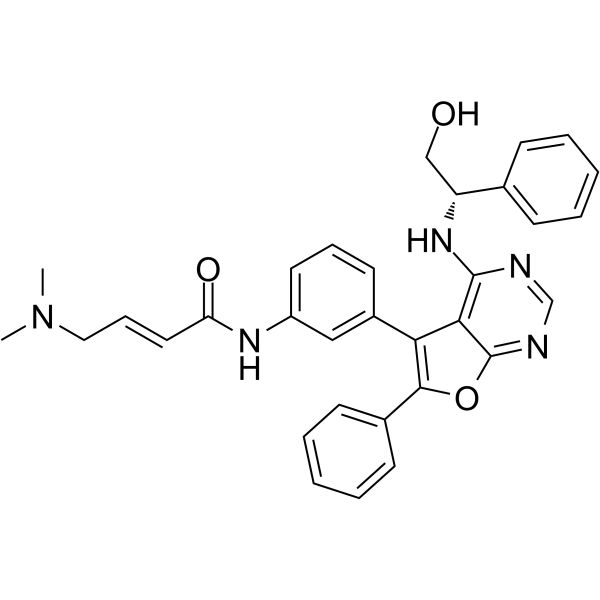
-
GC14007
DCC-2036 (Rebastinib)
DCC-2036 (Rebastinib) (DCC-2036) is an orally active, non-ATP-competitiveBcr-Abl inhibitor for Abl1WT and Abl1T315I with IC50s of 0.8 nM and 4 nM, respectively. DCC-2036 (Rebastinib) also inhibits SRC, KDR, FLT3, and Tie-2, and has low activity to seen towards c-Kit.
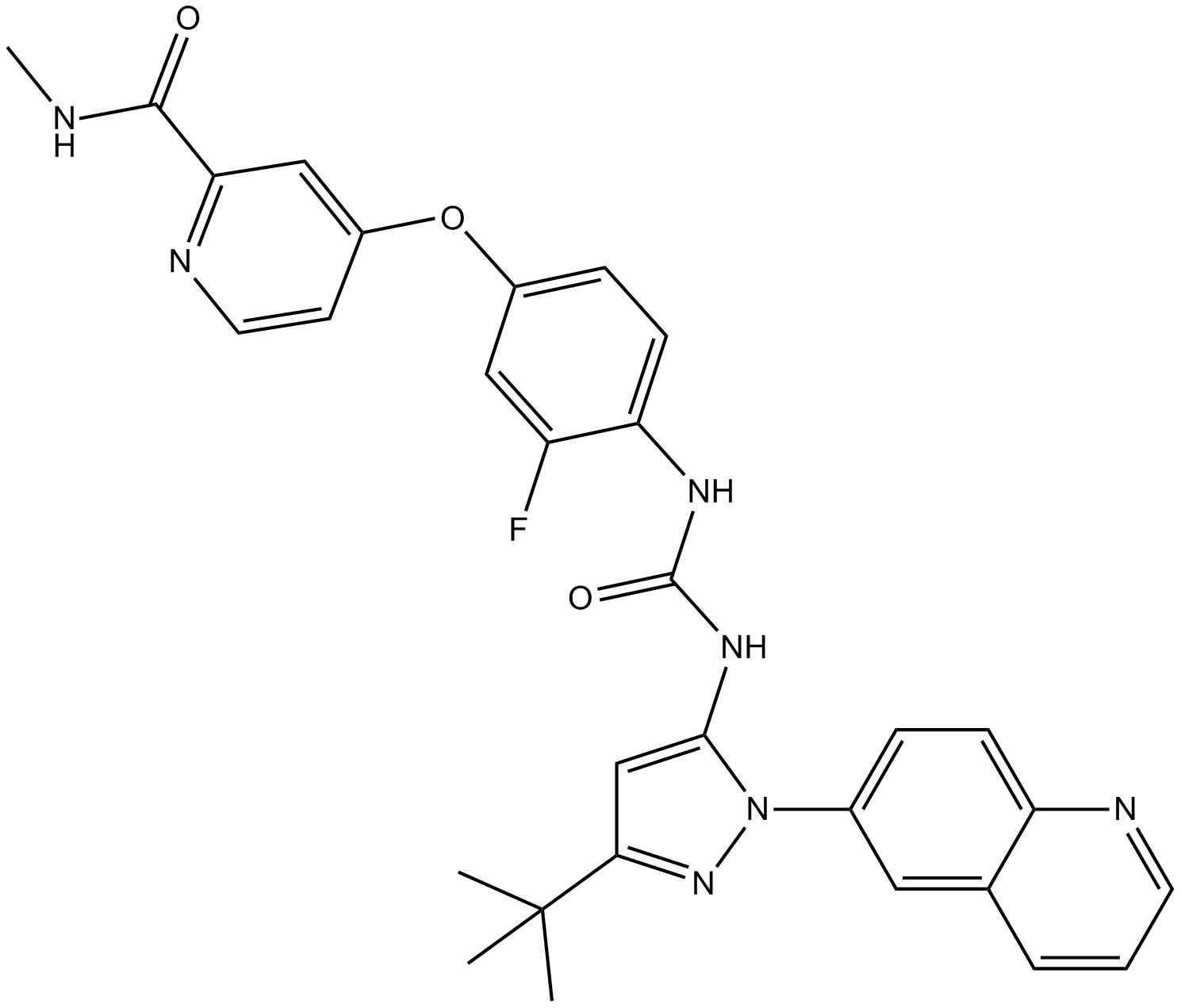
-
GC11171
DCC-2618
A dual inhibitor of c-Kit and c-MET

-
GC33361
DDR Inhibitor
DDR Inhibitor is a potent discoidin domain receptor (DDR) inhibitor, with an IC50 of 3.3 nM for DDR2, and shows 53% inhibition on DDR1 at 1.5 nM.
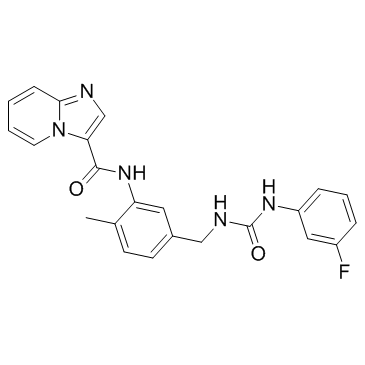
-
GC17365
DDR1-IN-1
selective DDR1 receptor tyrosine kinase inhibitor
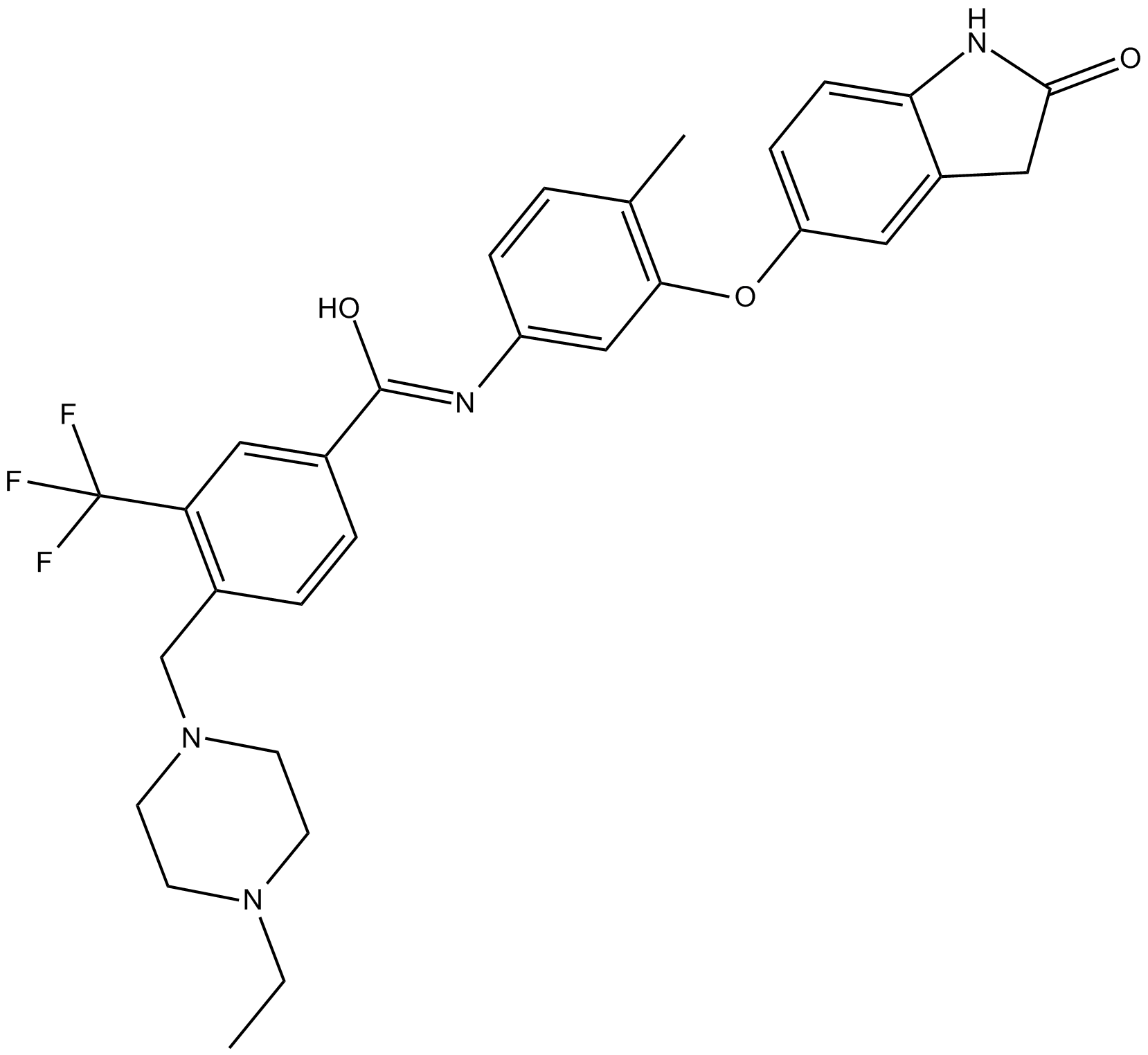
-
GC35822
DDR1-IN-1 dihydrochloride
DDR1-IN-1 dihydrochloride is a potent and selective DDR1 receptor tyrosine kinase inhibitor with an IC50 of 105 nM; 4-fold less potent for DDR2 (IC50 = 413 nM).
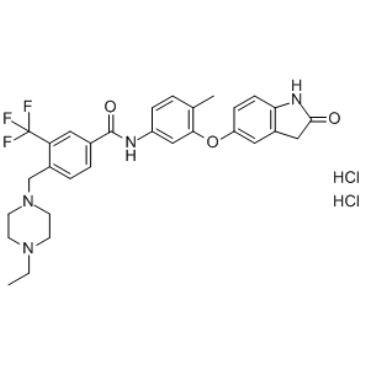
-
GC31724
DDR1-IN-2
DDR1-IN-2 (DDR1-IN-2) is a potent inhibitor of discoidin domain receptor 1 (DDR1), with an IC50 of 13.1 nM, and also less potently inhibits DDR2, with an IC50 of 203 nM.
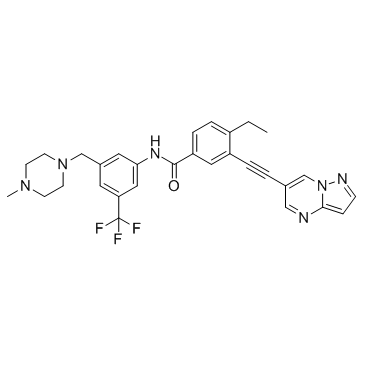
-
GC33297
DDR1-IN-3
DDR1-IN-3 is a selective Discoidin Domain Receptor 1 (DDR1) inhibitor, with an IC50 value of 9.4 nM. DDR1-IN-3 also inhibits TRK family.
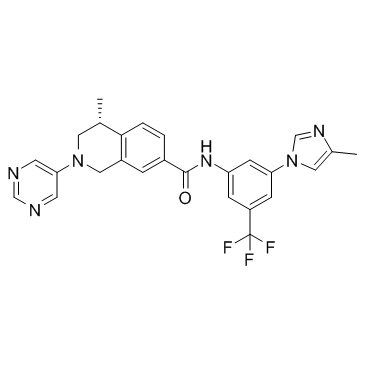
-
GC64268
DDR1-IN-4
DDR1-IN-4 (Compound 2.45) is a selective and potent Discoidin Domain Receptor 1 (DDR1) autophosphorylation inhibitor, with IC50 values of 29 nM and 1.9 μM for DDR1 and DDR2, respectively.
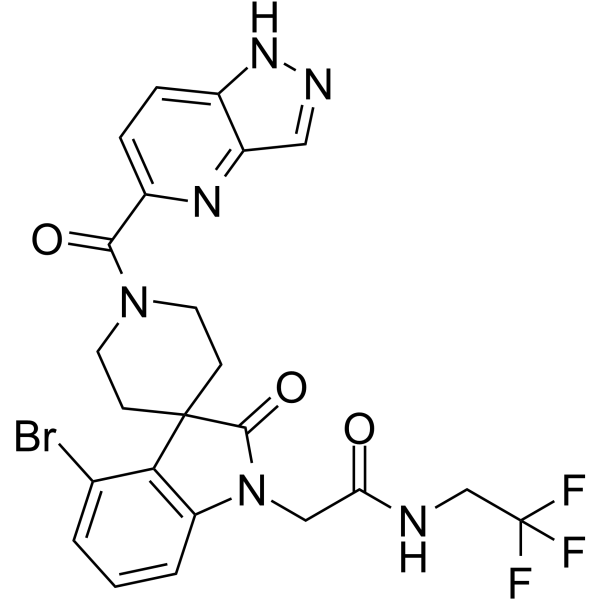
-
GC65378
DDR1-IN-5
DDR1-IN-5 is a selective Discoidin Domain Receptor family, member 1 (DDR1) inhibitor with an IC50 of 7.36 nM. DDR1-IN-5 inhibits auto-phosphorylation DDR1b (Y513) with an IC50 of 4.1 nM. DDR1-IN-5 has anti-cancer activity.
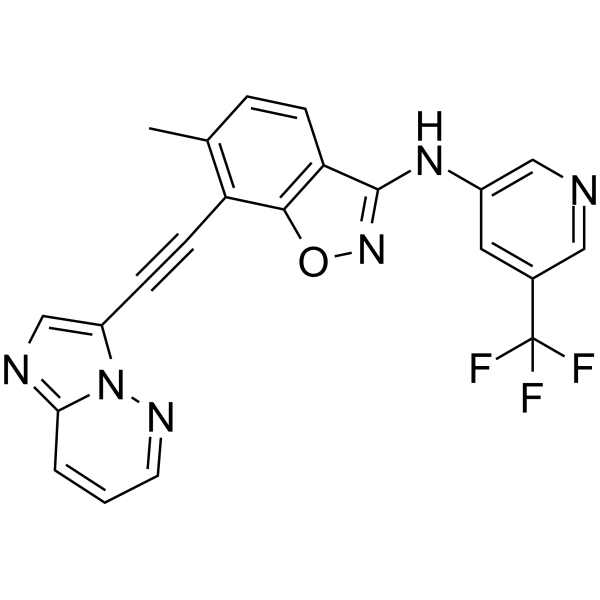
-
GC66476
DDR1-IN-6
DDR1-IN-6 is a selective Discoidin Domain Receptor family, member 1 (DDR1) inhibitor with an IC50 of 9.72 nM. DDR1-IN-6 inhibits auto-phosphorylation DDR1b (Y513) with an IC50 of 9.7 nM. DDR1-IN-6 has anti-cancer activity.
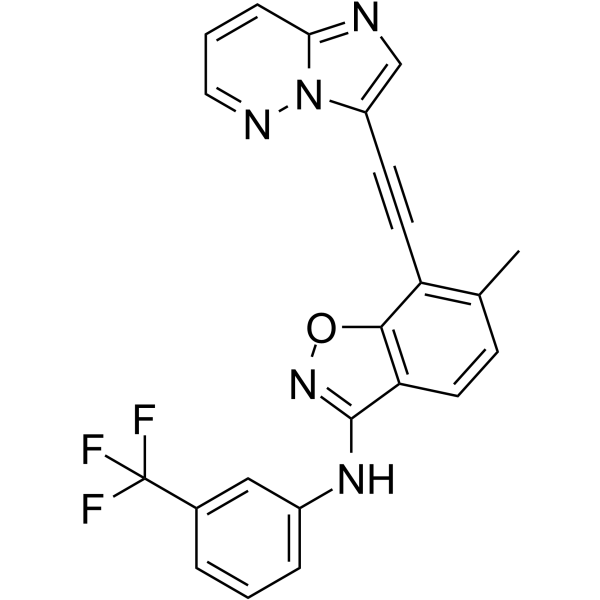
-
GC16813
Defactinib
FAK phosphorylation inhibitor
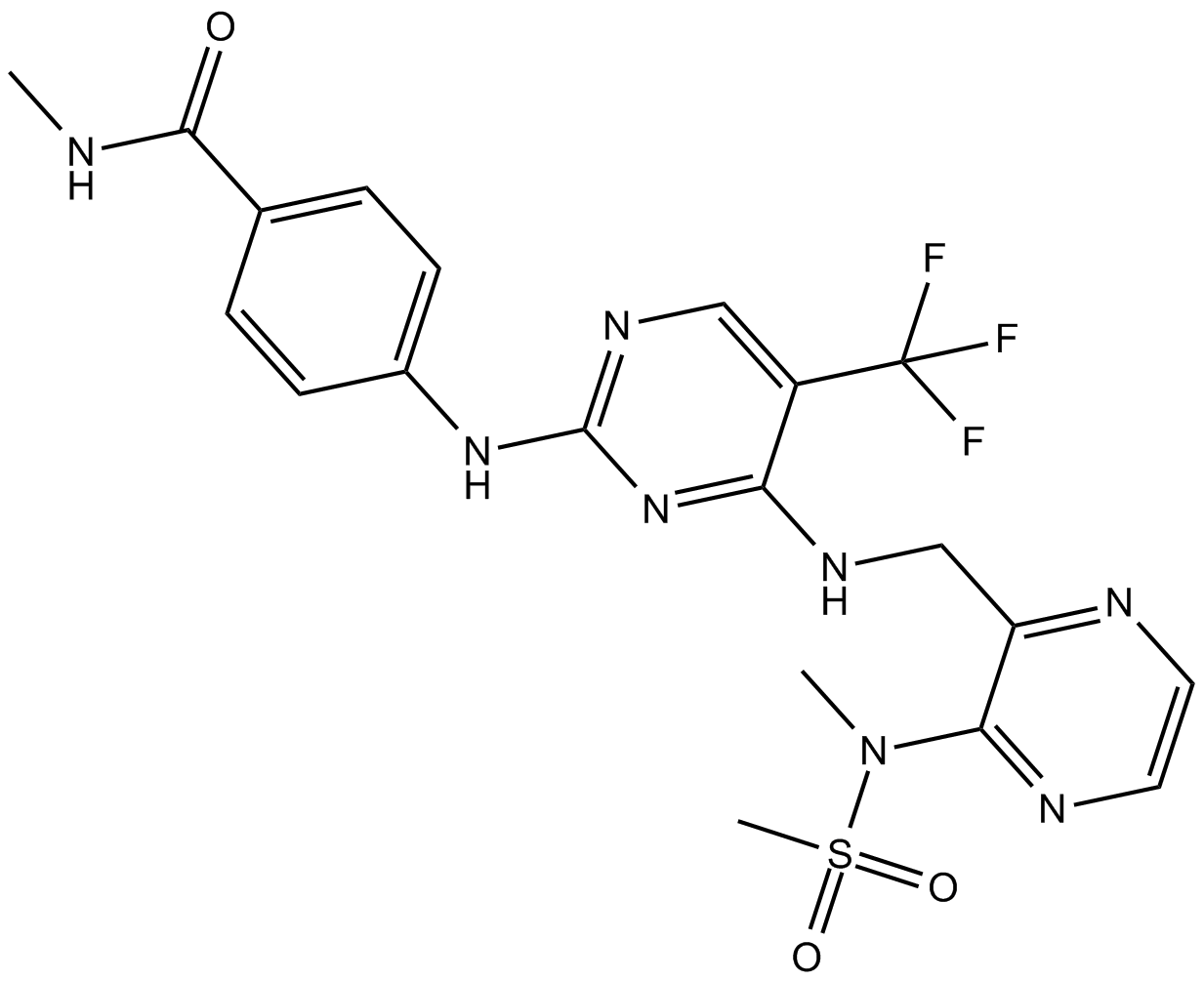
-
GC35827
Defactinib hydrochloride
A novel FAK inhibitor
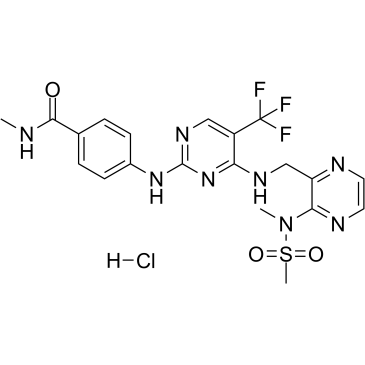
-
GC47182
Dehydrolithocholic Acid
Dehydrolithocholic Acid (Dehydrolithocholic acid), a bile acid metabolite, inhibits the diferentiation of TH17 cells by directly binding to the key transcription factor RORγt (Kd=1.13 μM).
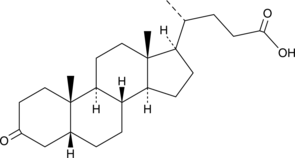
-
GC14905
Demethylasterriquinone B1
An insulin receptor (IR) activator
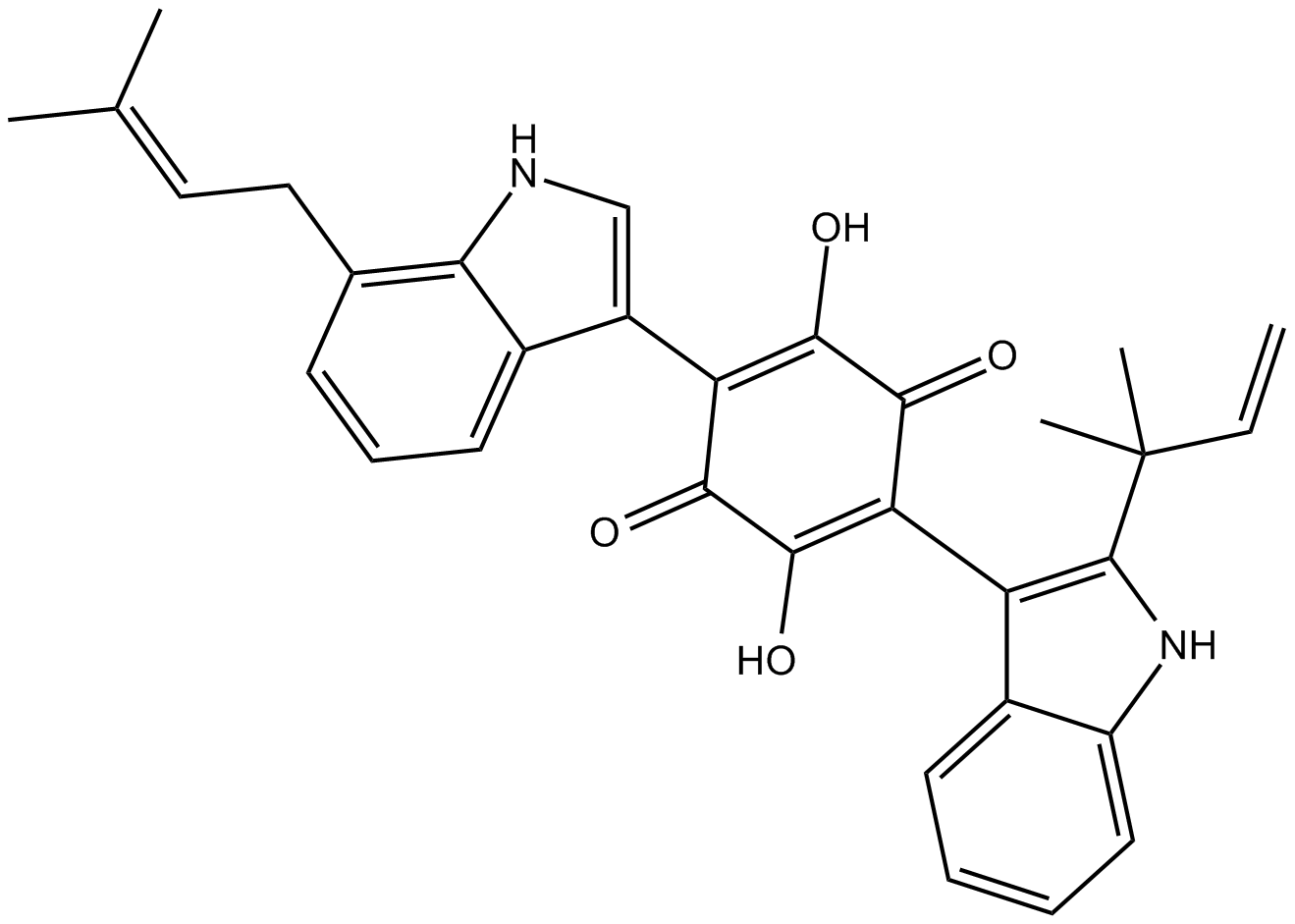
-
GC19399
Derazantinib
Derazantinib (ARQ-087) is an ATP competitive tyrosine kinase inhibitor; exhibits potent activity against FGFR1-3 chondrocytes with IC50s of 4.5, 1.8, and 4.5 nM, respectively.
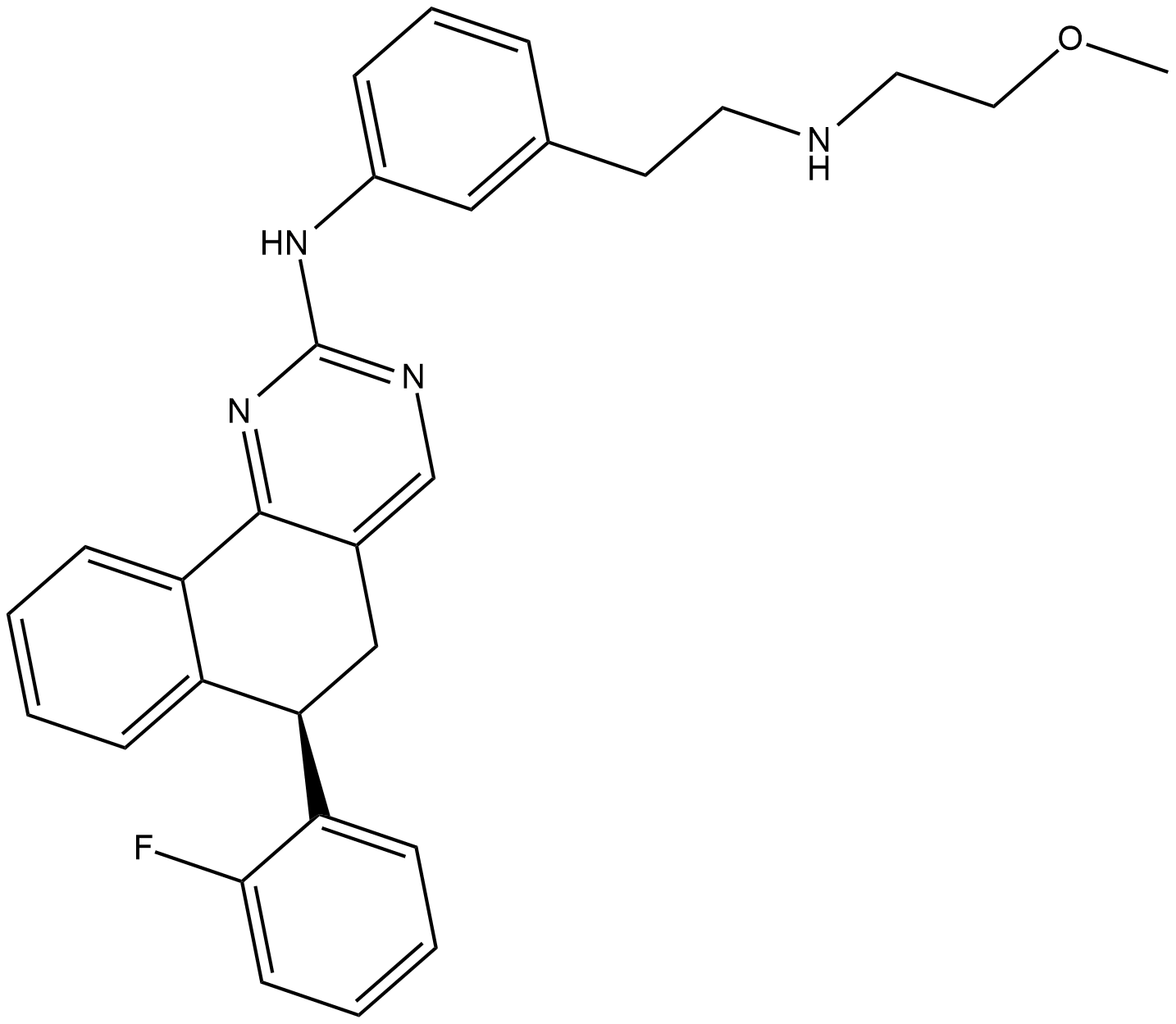
-
GC62107
DGY-06-116
DGY-06-116 is an irreversible covalent, selective Src inhibitor with an IC50 of 3nM. DGY-06-116 inhibits FGFR1 with an IC50 of 8340 nM.

-
GC30768
Dihexa (PNB-0408)
Dihexa (PNB-0408) (N-hexanoic-Tyr-Ile-(6)-amino hexanoic amide) is an oral active, blood-brain barrier-permeable angiotensin IV analogue.
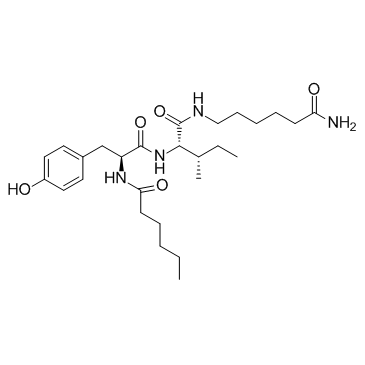
-
GC64039
Disitamab vedotin
Disitamab vedotin (RC48) is an antibody-drug conjugate (ADC) comprising a monoclonal antibody against human epidermal growth factor receptor 2 (HER2) conjugated via a cleavable linker to the cytotoxic agent Monomethyl auristatin E (MMAE). Disitamab vedotin enhances antitumor immunity.
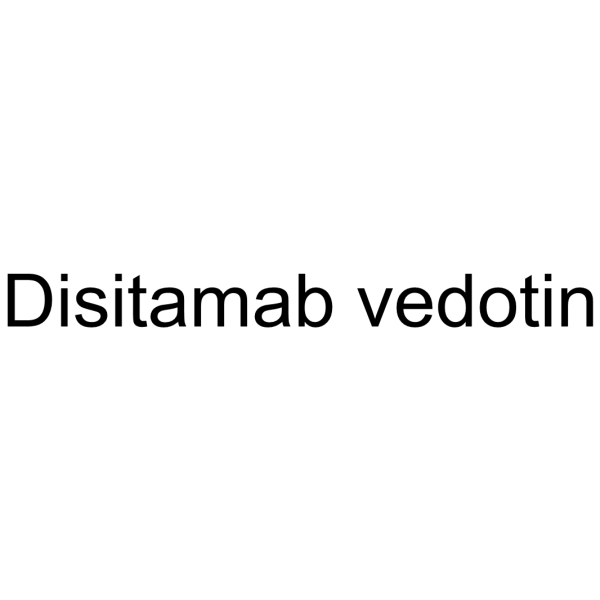
-
GC14298
DMH-1
Selective BMP ALK2 receptor
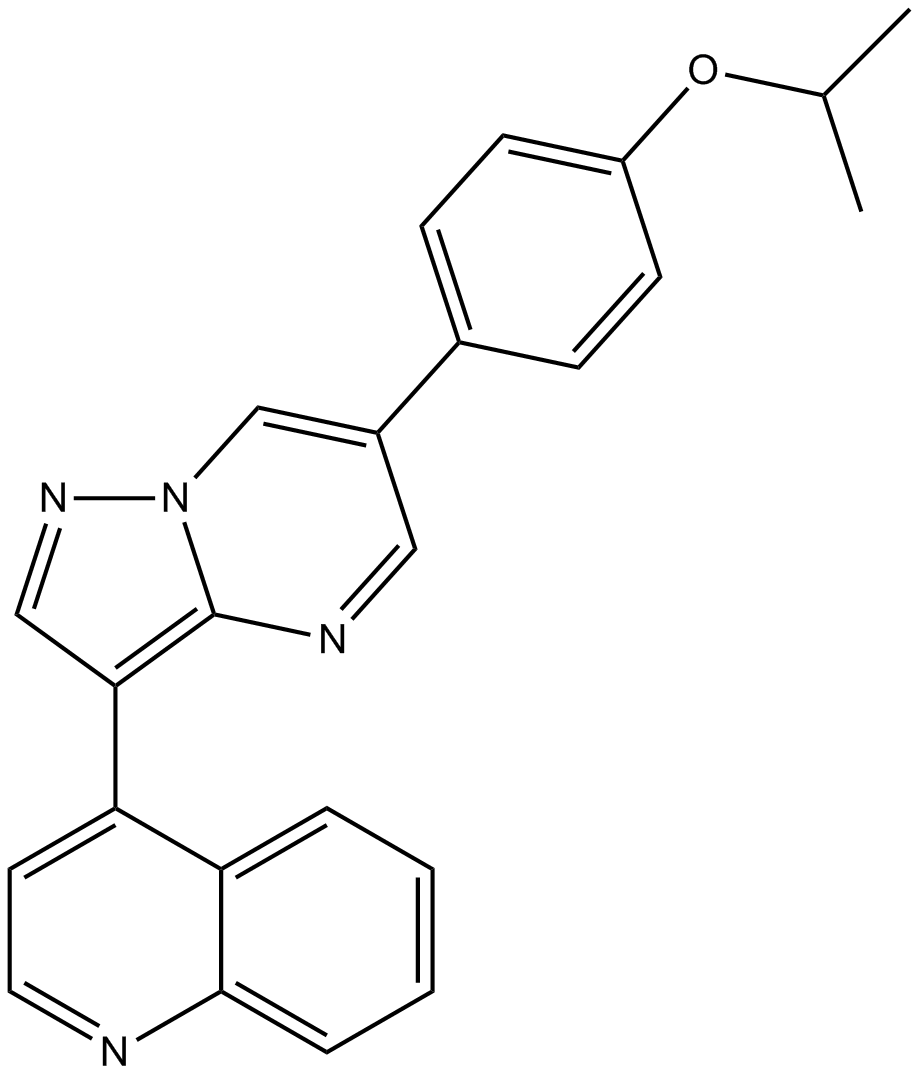
-
GC17098
DMH4
VEGFR-2 inhibitor
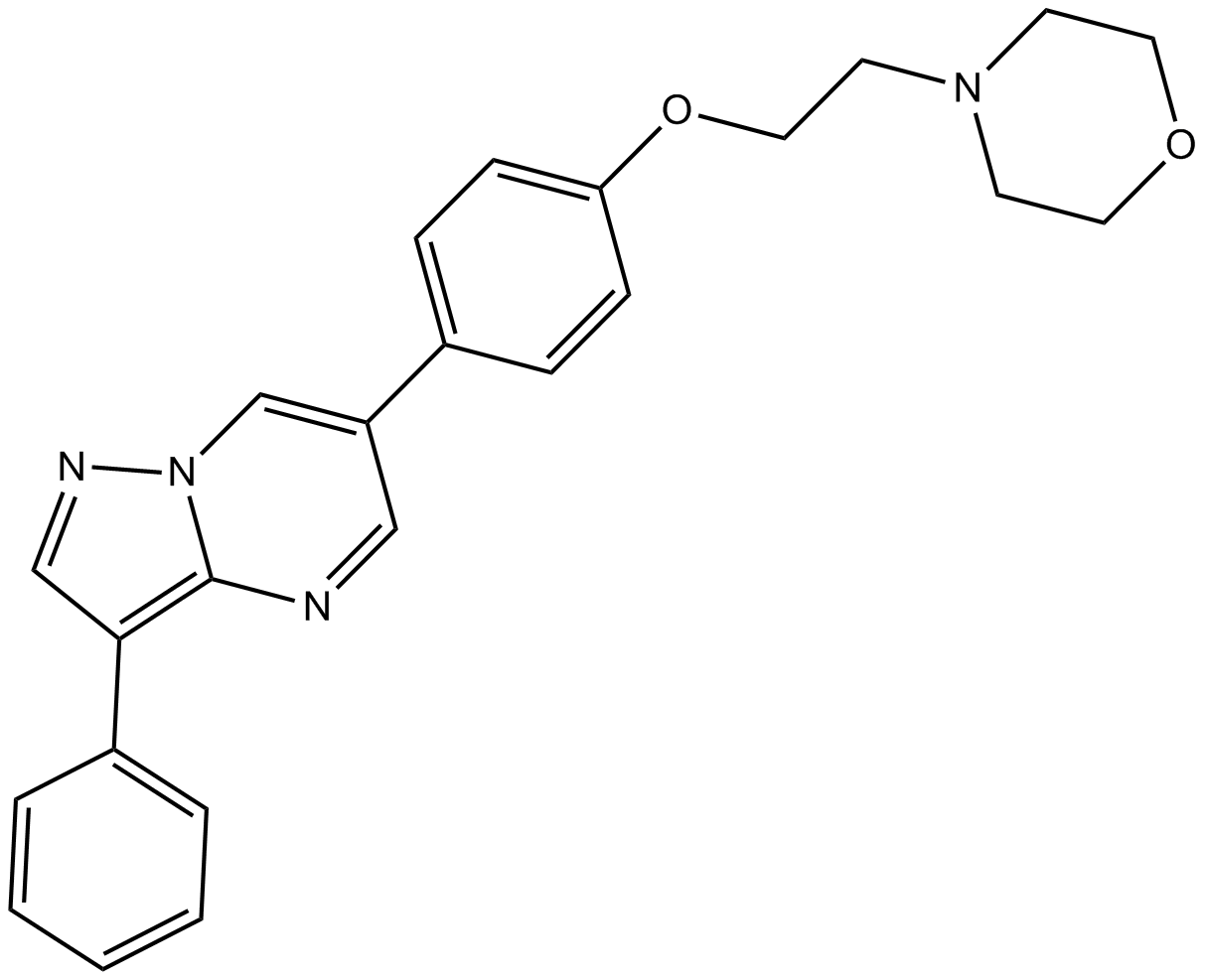
-
GC43503
DMHAPC-Chol
DMHAPC-Chol is a cationic cholesterol.

-
GC17024
DMPQ dihydrochloride
PDGFRβ inhibitor

-
GC10165
Dovitinib (TKI258) Lactate
Dovitinib (TKI258) Lactate (TKI258 lactate hydrate) is a multi-targeted tyrosine kinase inhibitor with IC50s of 1, 2, 8/9, 10/13/8, 27/210 nM for FLT3, c-Kit, FGFR1/3, VEGFR1/2/3 and PDGFRα/β, respectively.
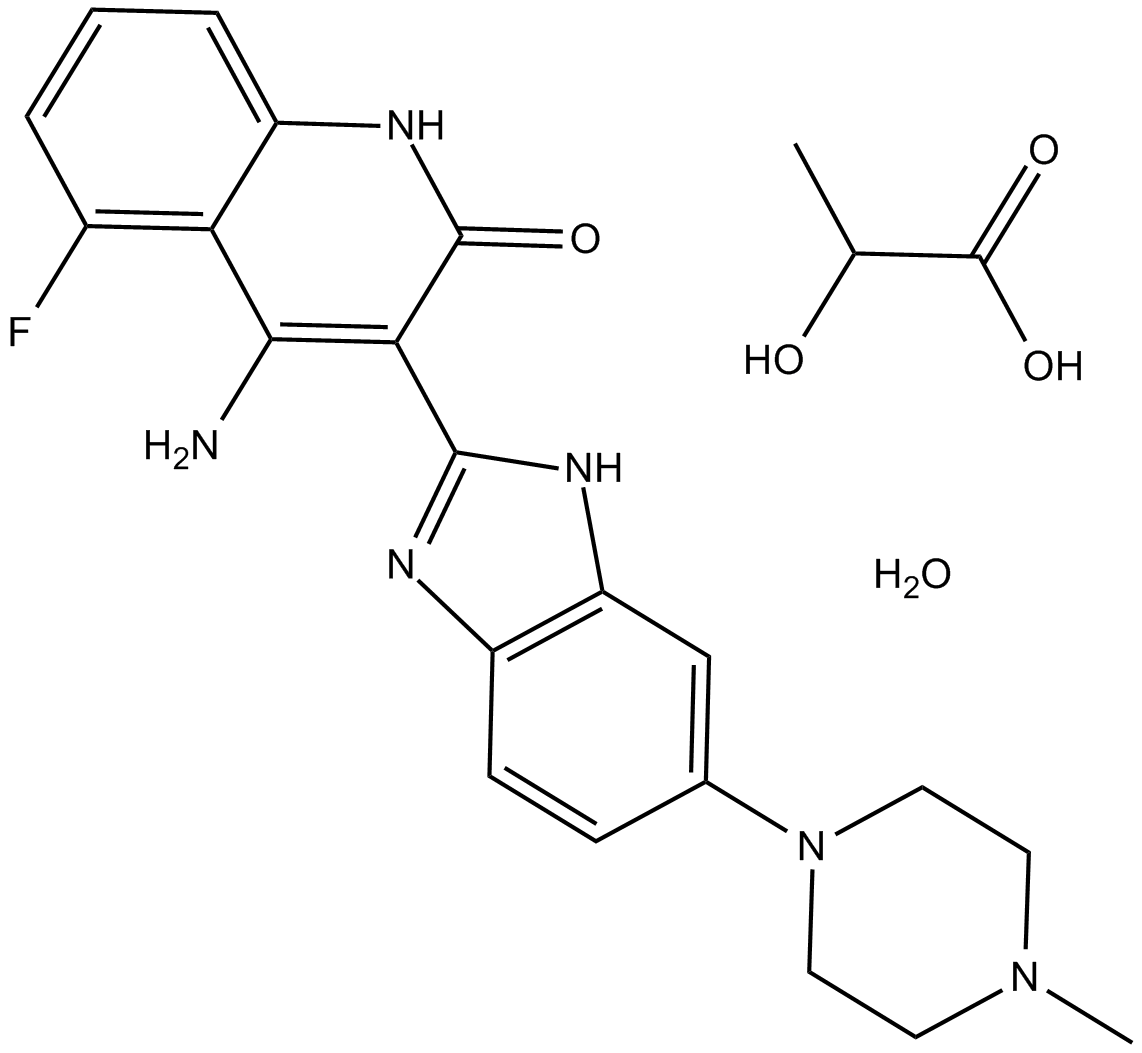
-
GC11372
Dovitinib Dilactic acid
FLT3 inhibitor
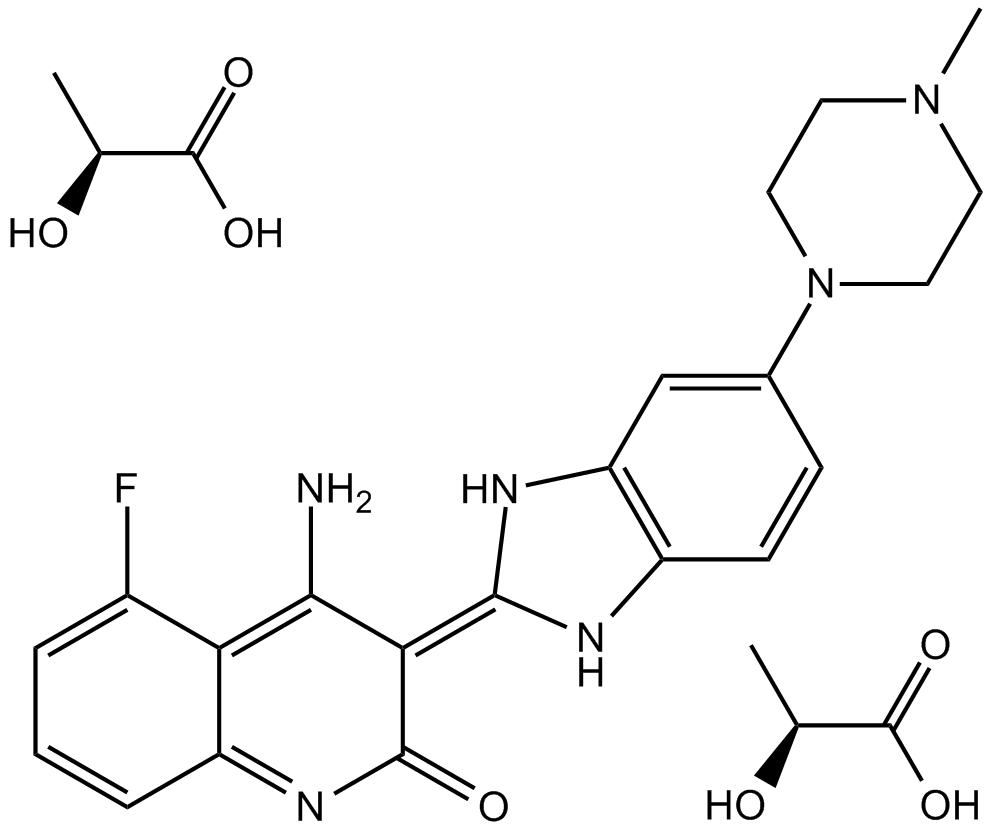
-
GC32760
Dovitinib lactate (CHIR-258 lactate)
Dovitinib lactate (CHIR-258 lactate) (TKI258 lactate) is a multi-targeted tyrosine kinase inhibitor with IC50s of 1, 2, 8/9, 10/13/8, 27/210 nM for FLT3, c-Kit, FGFR1/3, VEGFR1/2/3 and PDGFRα/β, respectively.
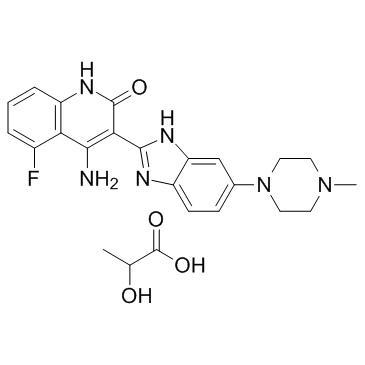
-
GC45767
Dovitinib-d8
An internal standard for the quantification of dovitinib
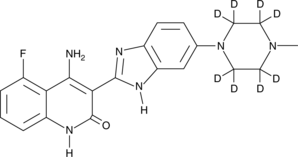
-
GC35897
DPH
A potent cell permeable c-Abl activator

-
GC62597
DS-1205b free base
DS-1205b free base is a potent and selective inhibitor of AXL kinase, with an IC50 of 1.3 nM. DS-1205b free base also inhibits MER, MET, and TRKA, with IC50s of 63, 104, and 407 nM, respectively. DS-1205b free base can inhibit cell migration in vitro and tumor growth in vivo.
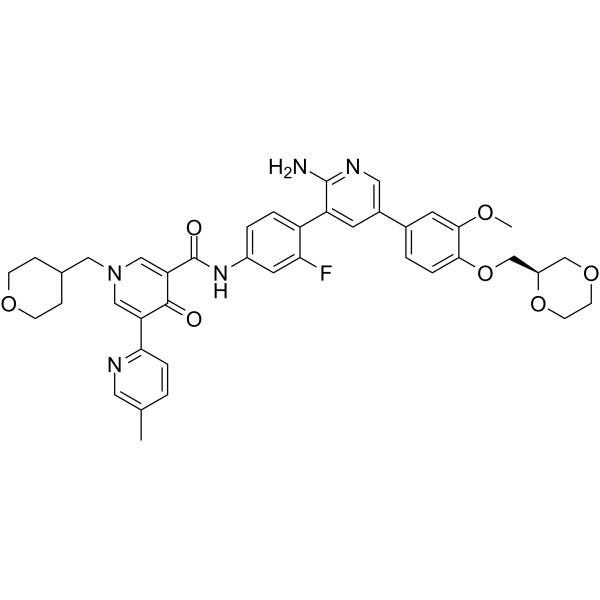
-
GC62946
DYRK1-IN-1
DYRK1-IN-1 is a highly selective and ligand-efficient DYRK1A inhibitor.
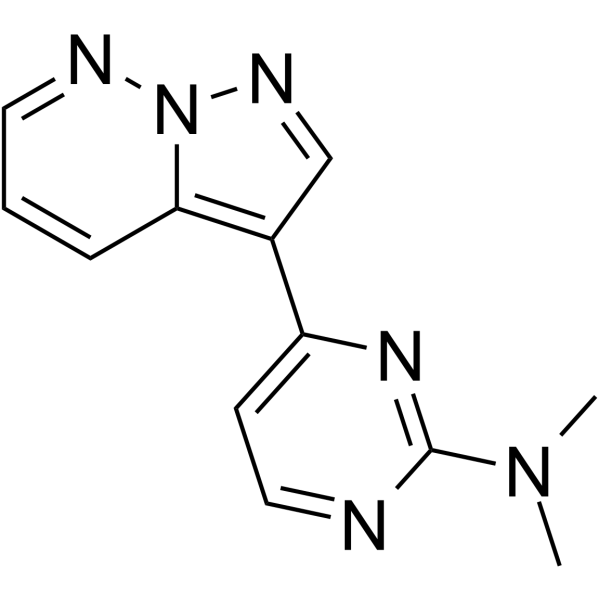
-
GC62947
DYRKs-IN-1 hydrochloride
DYRKs-IN-1 hydrochloride is a potent DYRKs (Dual-specificity tyrosine-phosphorylation-regulated kinases) inhibitor with IC50s of 5 nM and 8 nM for DYRK1A and DYRK1B, respectively. DYRKs-IN-1 hydrochloride has antitumor activity.
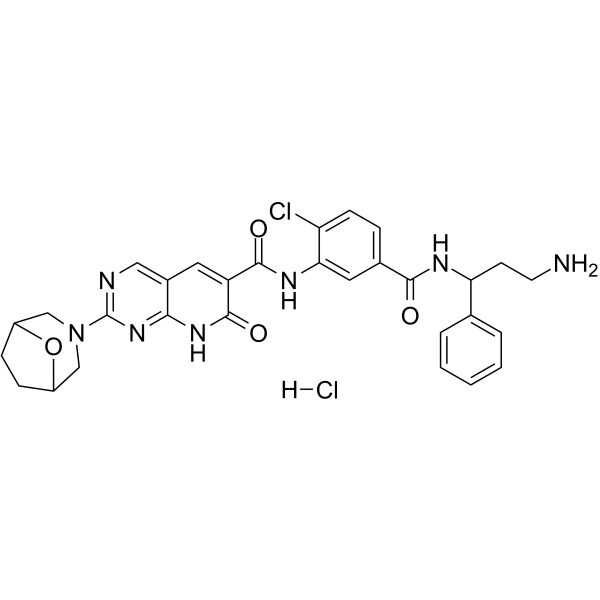
-
GC12149
E-3810

-
GC62696
E7090 succinate
E7090 succinate is an orally available, selective and potent inhibitor of FGFR1, FGFR2 and FGFR3 tyrosine kinase activities, with IC50 values of 0.71 nM, 0.50 nM, 1.2 nM, and 120 nM for FGFR1/2/3/4, respectively.
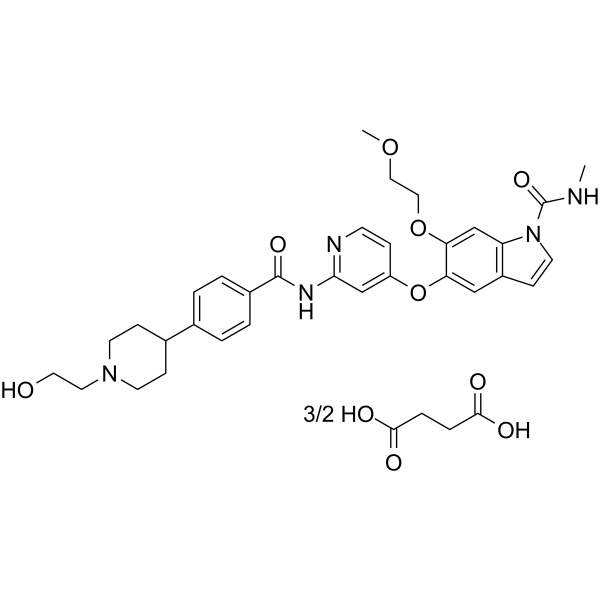
-
GC66432
EAI001
EAI001 is a potent, selective mutant epidermal growth factor receptor (EGFR) allosteric inhibitor with an IC50 value of 24 nM for EGFRL858R/T790M. EAI001 can be used for research of cancer.
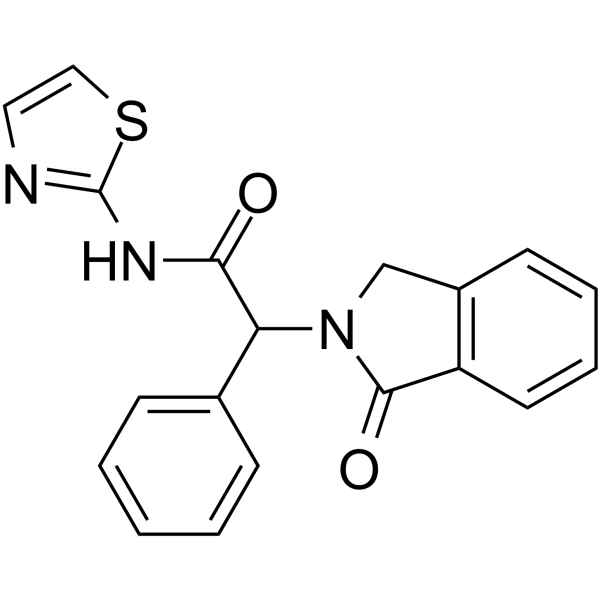
-
GC12281
EAI045
Inhibitor of L858R/T790M EGFR mutants
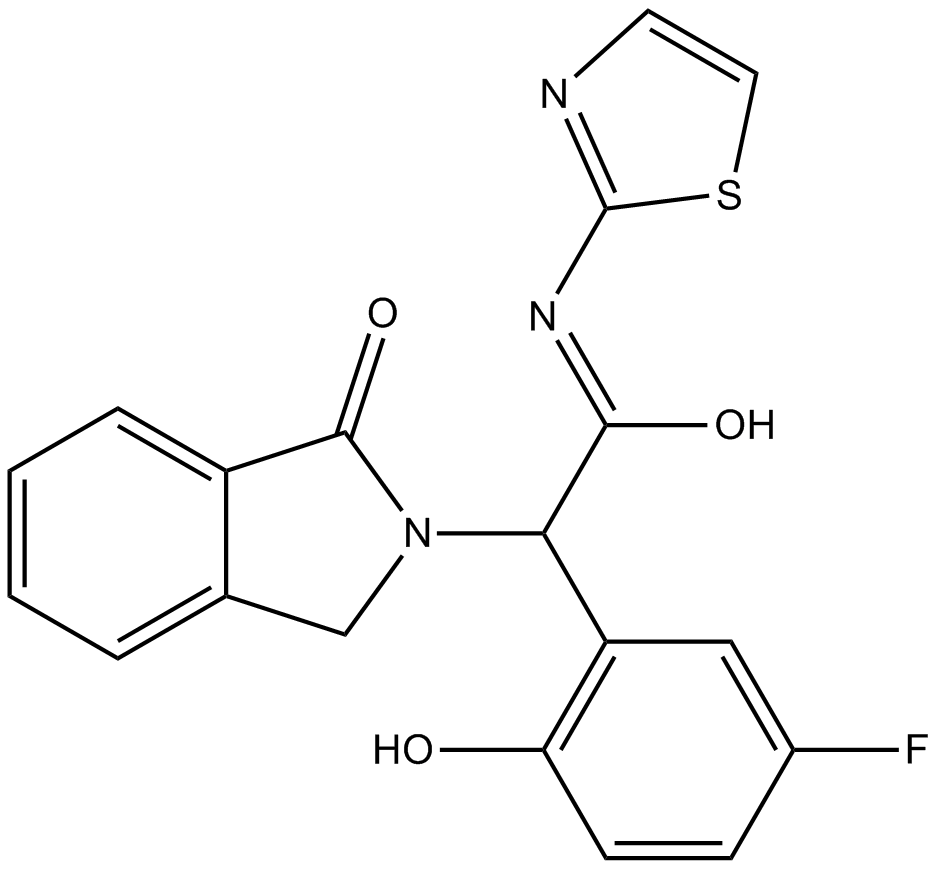
-
GC64730
EB-42486
EB-42486 is a novel, potent, and highly selective G2019S-LRRK2 inhibitor (IC50 < 0.2 nM).
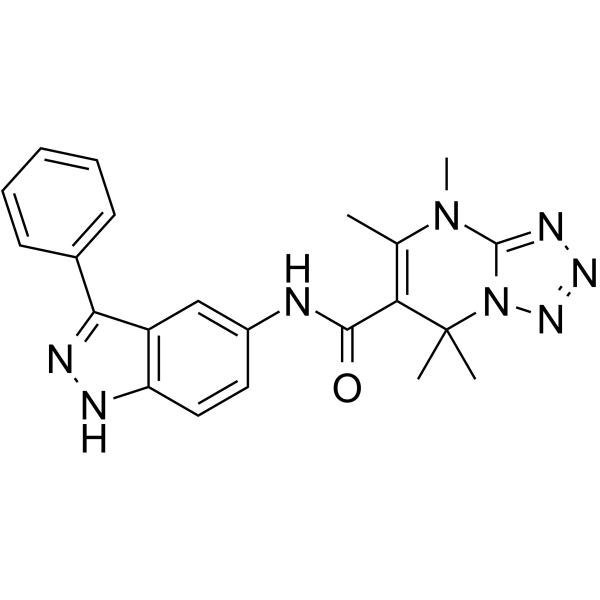
-
GC32825
eCF506
An inhibitor of Src kinases
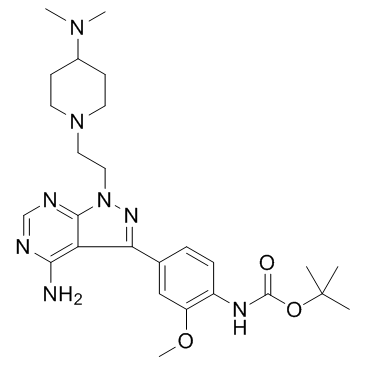
-
GC67879
Edecesertib
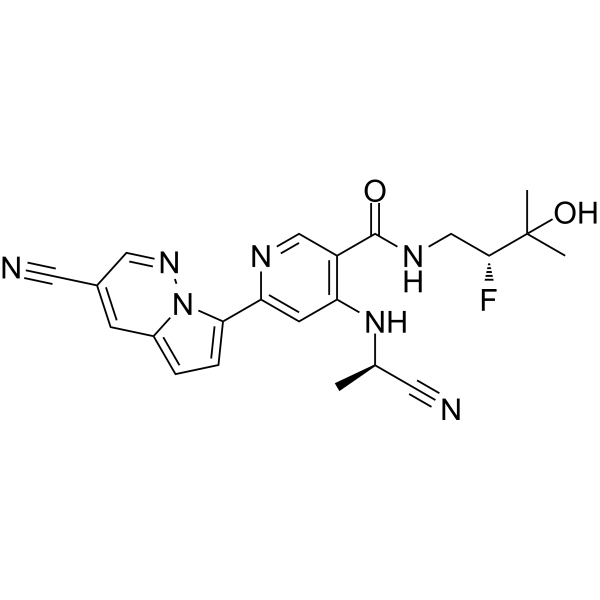
-
GC19418
Edicotinib
Edicotinib is a selective and orally available colony-stimulating factor-1 (CSF-1) receptor inhibitor, and has entered phase IIA clinical trial to study rheumatoid arthritis (RA) despite disease.

-
GC16183
EG00229
Nrp1 inhibitor
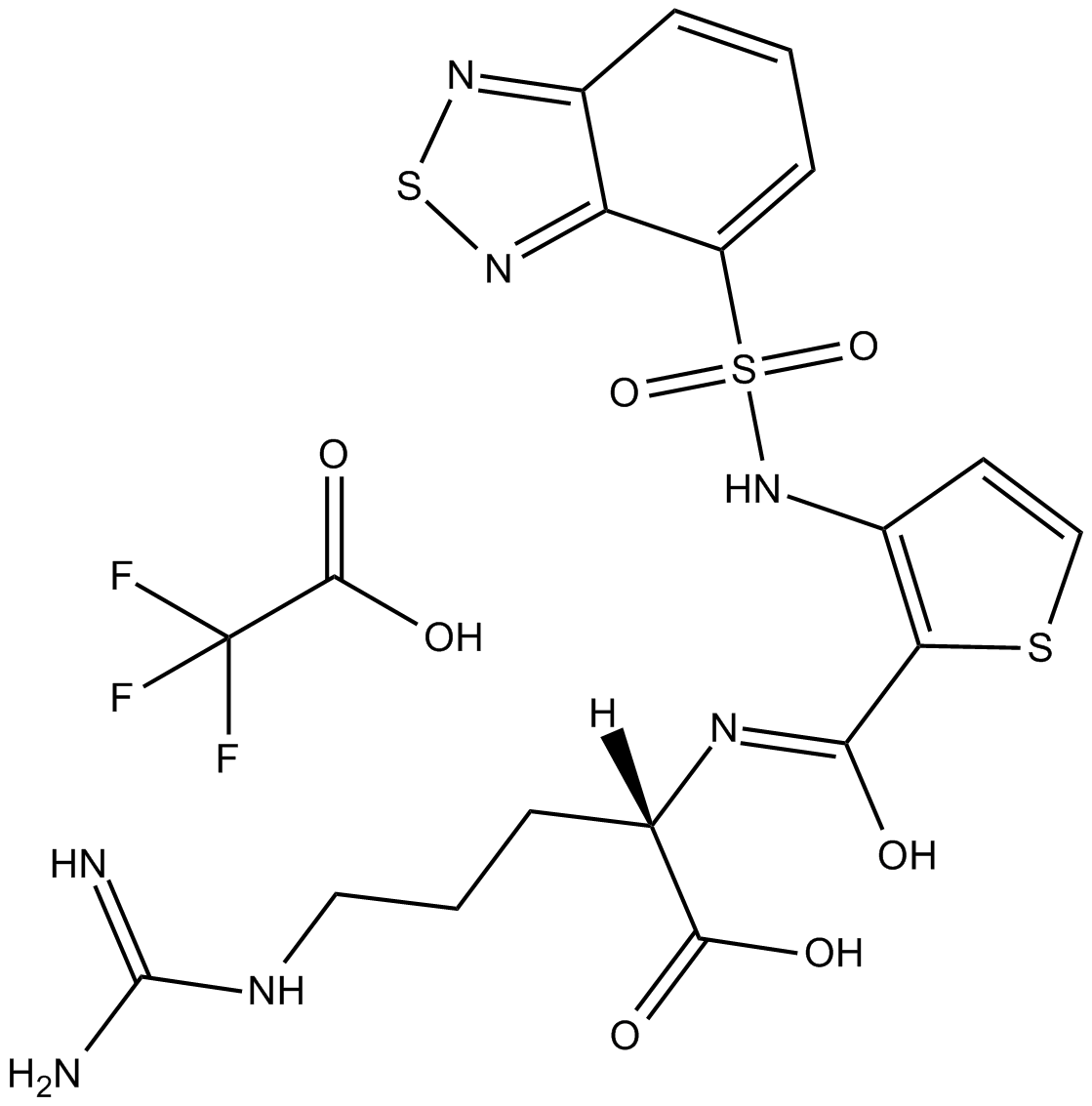
-
GC16321
EGF816
EGF816 (EGF816) is a covalent mutant-selective EGFR inhibitor, with Ki and Kinact of 31 nM and 0.222 min-1 on EGFR(L858R/790M) mutant, respectively.

-
GC11312
EGFR Inhibitor
EGFR Inhibitor is a 4,6-disubstituted pyrimidine and is a potent, ATP-competitive, irreversible and highly selective EGFR inhibitor with an IC50of 21 nM. EGFR Inhibitor also inhibits mutant EGFRL858R and EGFRL861Q with IC50s of 63 nM and 4 nM, respectively. EGFR Inhibitor displays strong selectivity for EGFR over HER4 (IC50 = 7640 nM) and a panel of 55 other kinases. EGFR Inhibitor induces cells apoptosis and has antitumor activity.
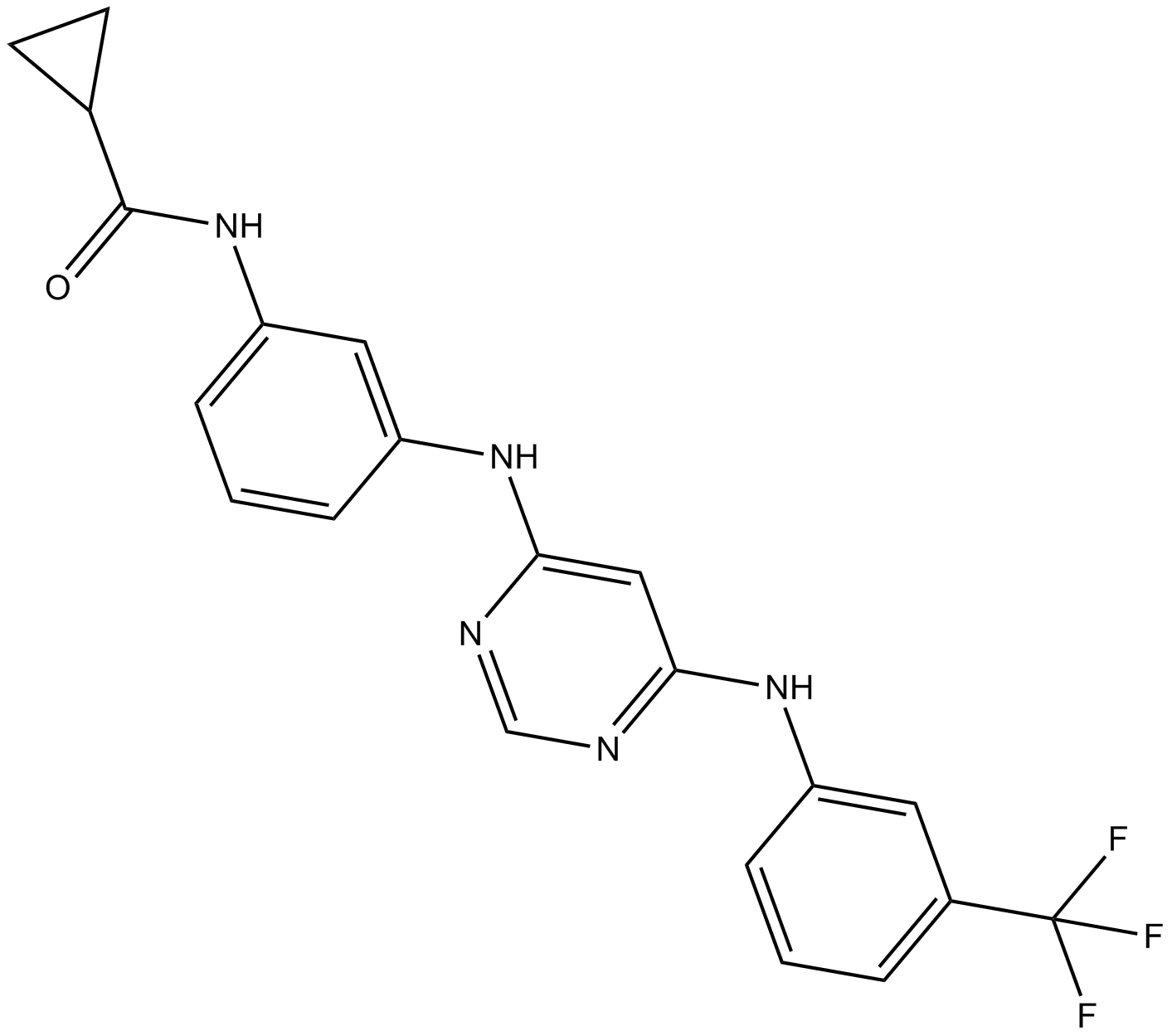
-
GC35965
EGFR mutant-IN-1
EGFR mutant-IN-1, a 5-methylpyrimidopyridone derivative, is a potent and selective EGFRL858R/T790M/C797S mutant inhibitor with an IC50 of 27.5 nM, while being a significantly less potent for EGFRWT (IC50 >1.0 μM).
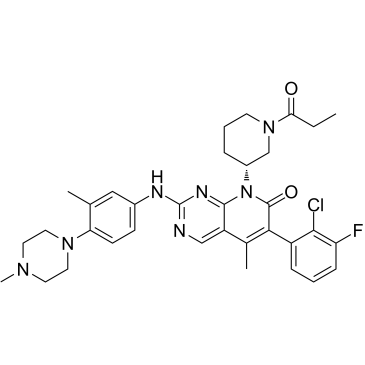
-
GC65572
EGFR Protein Tyrosine Kinase Substrate
EGFR Protein Tyrosine Kinase Substrate is a EGFR protein tyrosine kinase substrate.
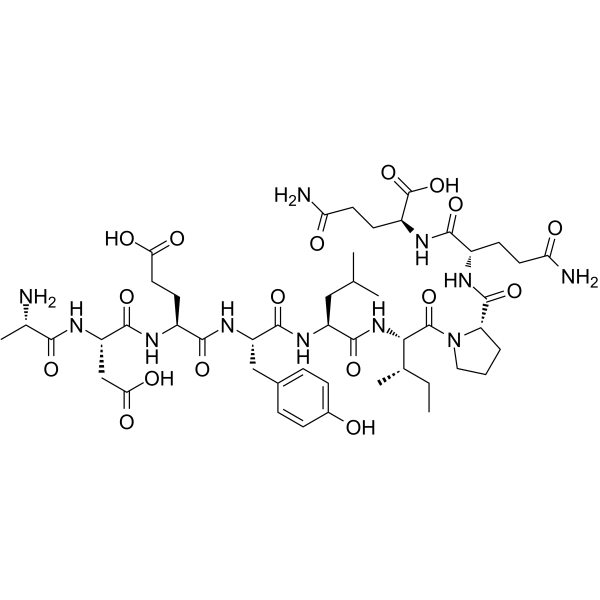
-
GC62562
EGFR-IN-11
EGFR-IN-11 is a fourth-generation EGFR-tyrosine kinase inhibitor (EGFR-TKI) with an IC50 of 18 nM for triple mutant EGFRL858R/T790M/C797S. EGFR-IN-11 significantly suppresses the EGFR phosphorylation, induce the apoptosis, and arrest cell cycle at G0/G1.
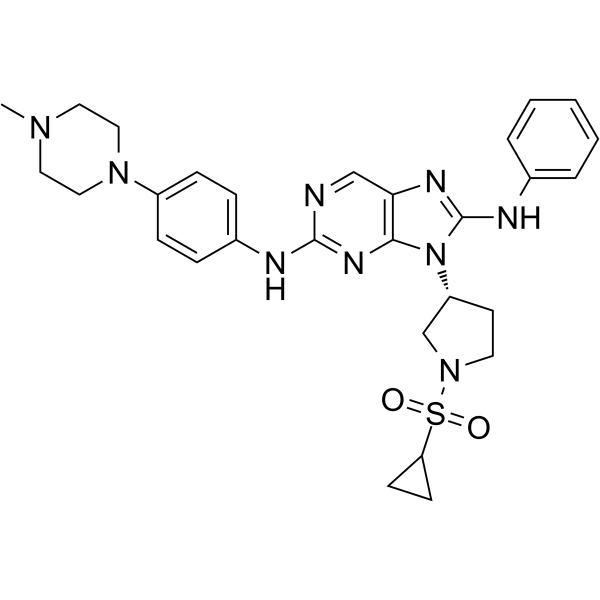
-
GC64497
EGFR-IN-17
EGFR-IN-17 is a potent and selective inhibitor of the epidermal growth factor receptor ( IC50 0.0002 μM) to overcome C797S-mediated resistance.

-
GC33195
EGFR-IN-2
EGFR-IN-2 is a a noncovalent, irreversible, mutant-selective second generation EGFR inhibitor.

-
GC19132
EGFR-IN-3
EGFR-IN-3 is a third-generation EGFR TKI, with GI50 values of 5 nM (EGFR L858R/T790M), 10 nM (EGFR del19) and 689 nM (EGFR WT), respectively. EGFR-IN-3 has the potential for NSCLC research.
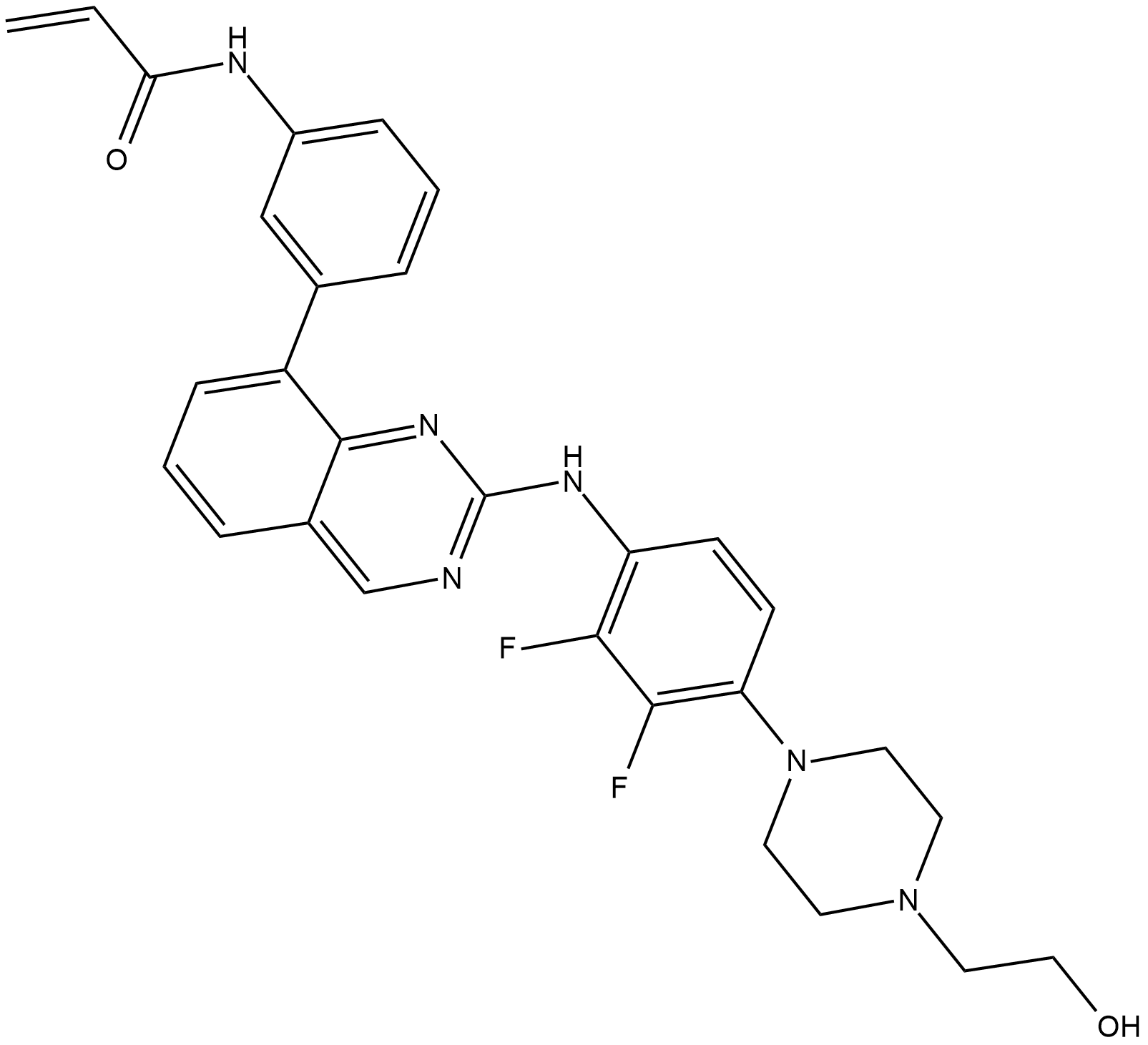
-
GC66428
EGFR-IN-5
EGFR-IN-5 is a EGFR inhibitor with IC50s of 10.4, 1.1, 34, 7.2 nM for EGFR, EGFRL858R, EGFRL858R/T790M, and EGFRL858R/T790M/C797S, respectively.
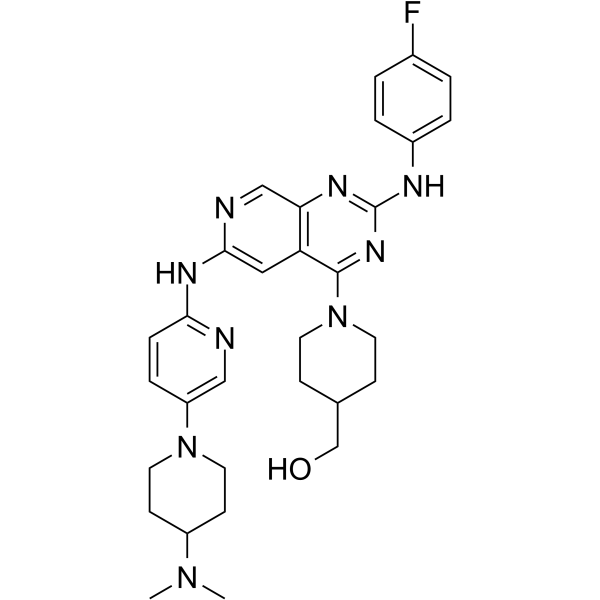
-
GC68440
EGFR-IN-69

-
GC35966
EGFR-IN-7
EGFR-IN-7 is a potent, selective and orally active EGFR kinase inhibitor. EGFR-IN-7 has inhibitory effect for for EGFR (WT) and EGFR (mutant C797S/T790M/L858R) with IC50 values of 7.92 nM and 0.218 nM, respectively. EGFR-IN-7 shows anti-tumor activity. EGFR-IN-7 can be used for the research of various cancers.
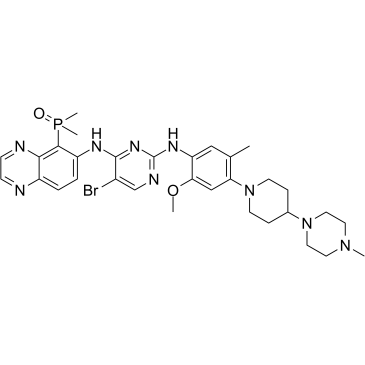
-
GC65974
EGFR-IN-9
EGFR-IN-9 (Compound 8) is a potent EGFR kinase inhibitor with IC50s of 7 nM, 28 nM for the wild type EGFR kinase and double mutant EGFR kinase (L858R/T790M). EGFR-IN-9 has antitumor activity.
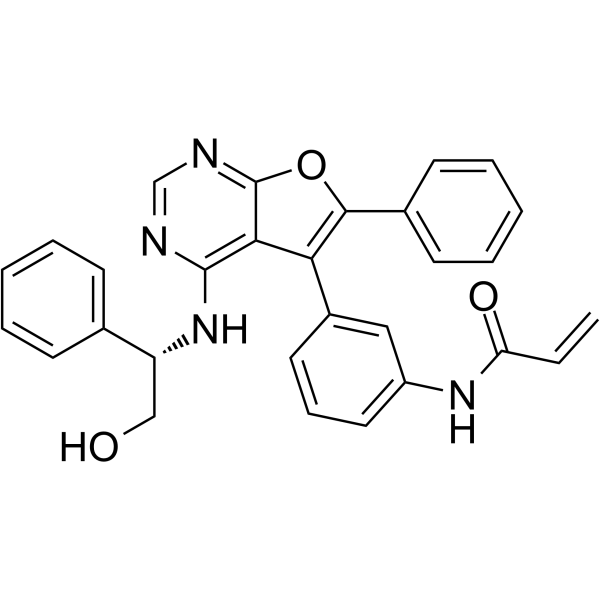
-
GC14856
EGFR/ErbB2 Inhibitor
EGFR/ErbB2 Inhibitor (Compound 5) is a EGFR and ErbB inhibitor with IC50s of 0.017 μM, 0.08 μM, 1.91 μM.
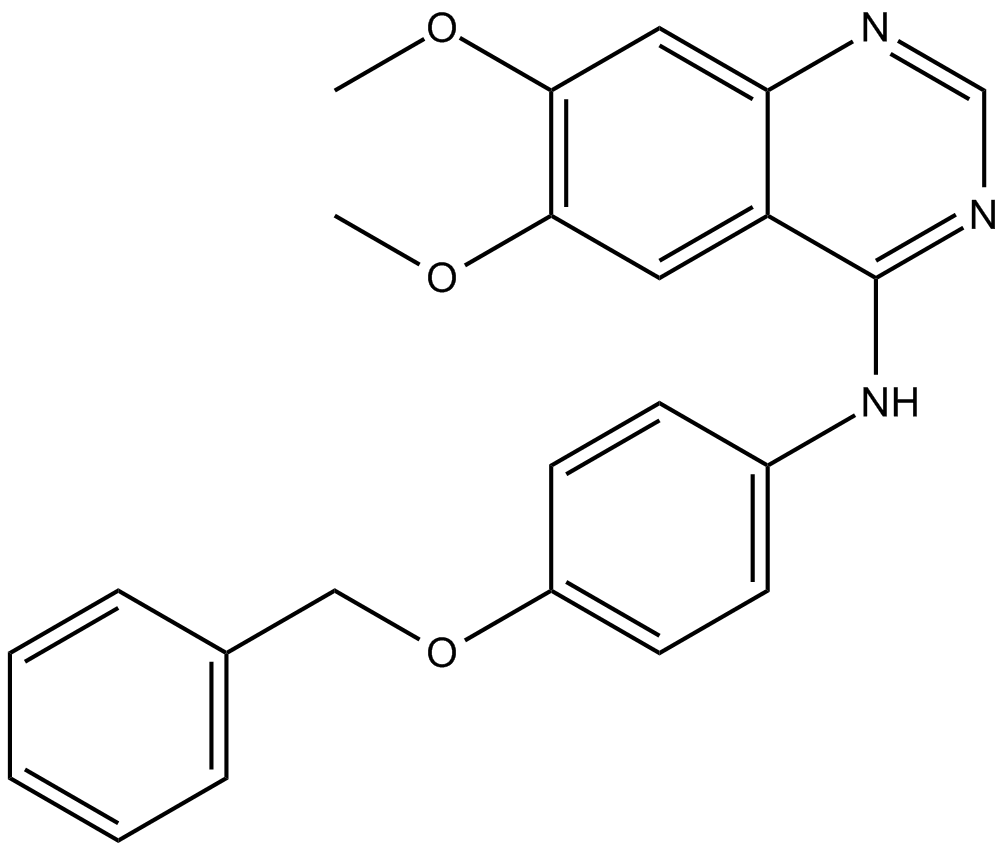
-
GC25367
Ehp-inhibitor-1
Ehp-inhibitor-1 (Ehp inhibitor 2) is an Eph family tyrosine kinase inhibitor that targets Eph receptors.
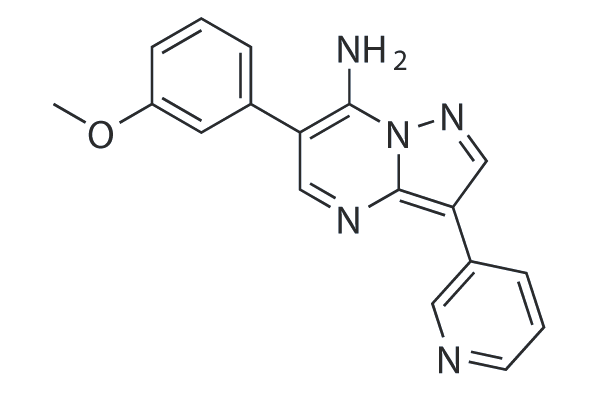
-
GC38330
EHT 5372
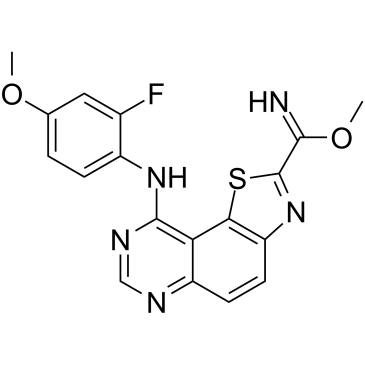
-
GC10466
EMD-1214063
EMD-1214063 (Tepotinib, MSC2156119J) is a novel potent and highly selective reversible, ATP-competitive small molecule c-Met inhibitor .
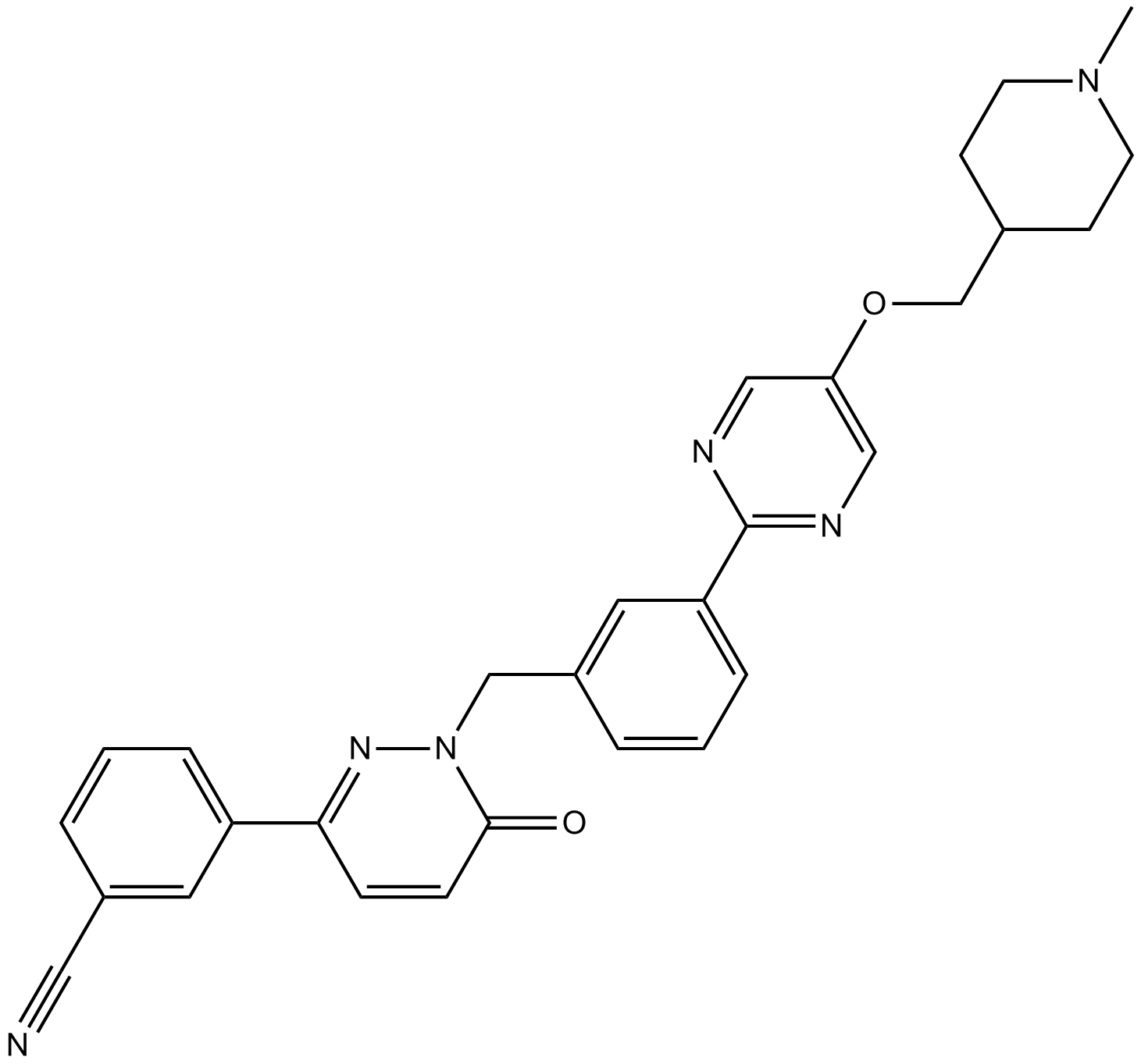
-
GC60805
EMI48
EMI48, the derivative of EMI1, displays greater potency toward mutant EGFR than EMI1. EMI48 inhibits EGFR triple mutants.
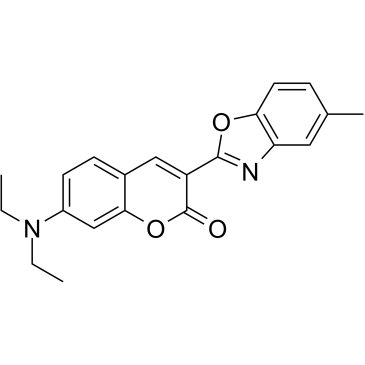
-
GC62420
EMI56
EMI56, the derivative of EMI1, displays greater potency toward mutant EGFR than EMI1. EMI56 inhibits EGFR triple mutants.
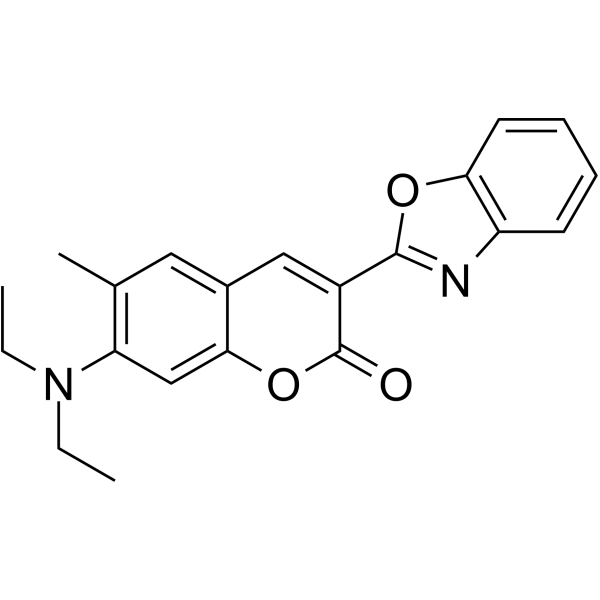
-
GC65354
Enbezotinib
Enbezotinib, an inhibitor of RET, can inhibit the RET autophosphorylation. Enbezotinib can be used for the research of cancer.

-
GC16519
ENMD-2076
A multi-kinase inhibitor
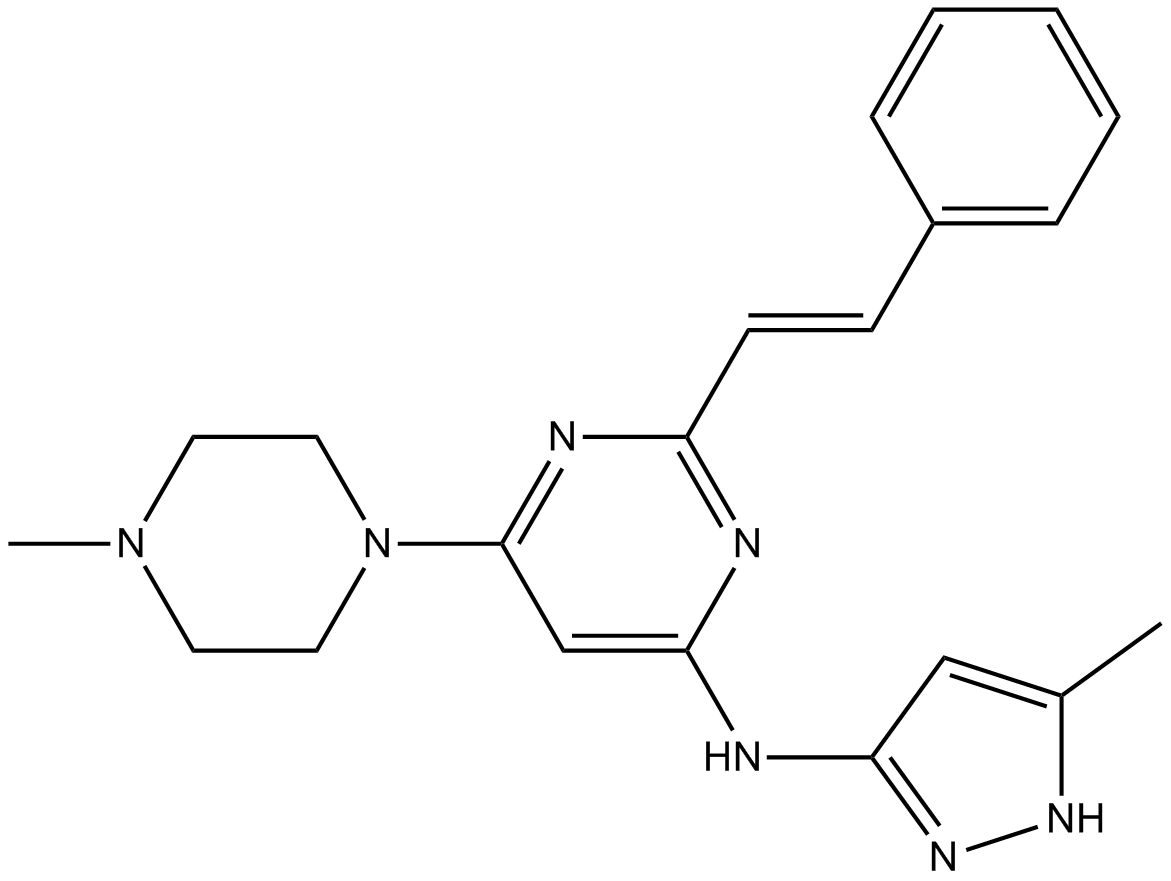
-
GC12145
ENMD-2076 L-(+)-Tartaric acid

-
GC33190
Ensartinib (X-396)
Ensartinib (X-396) (X-396) is a potent and dual ALK/MET inhibitor with IC50s of <0.4 nM and 0.74 nM, respectively.

-
GC32864
Ensartinib hydrochloride (X-396 hydrochloride)
Ensartinib hydrochloride (X-396 hydrochloride) (X-396 dihydrochloride) is a potent and dual ALK/MET inhibitor with IC50s of <0.4 nM and 0.74 nM, respectively.
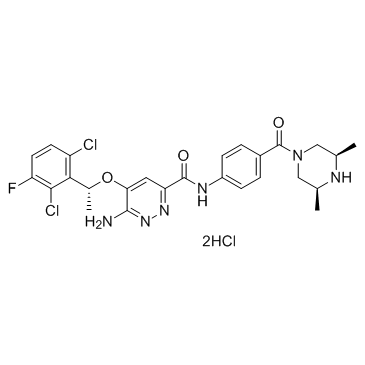
-
GC38776
Ensulizole
Ensulizole is a sulfonated UV absorber and can intense UVB and partial UVA absorption.

-
GC14476
Entrectinib
Orally active inhibitor of ALK kinase
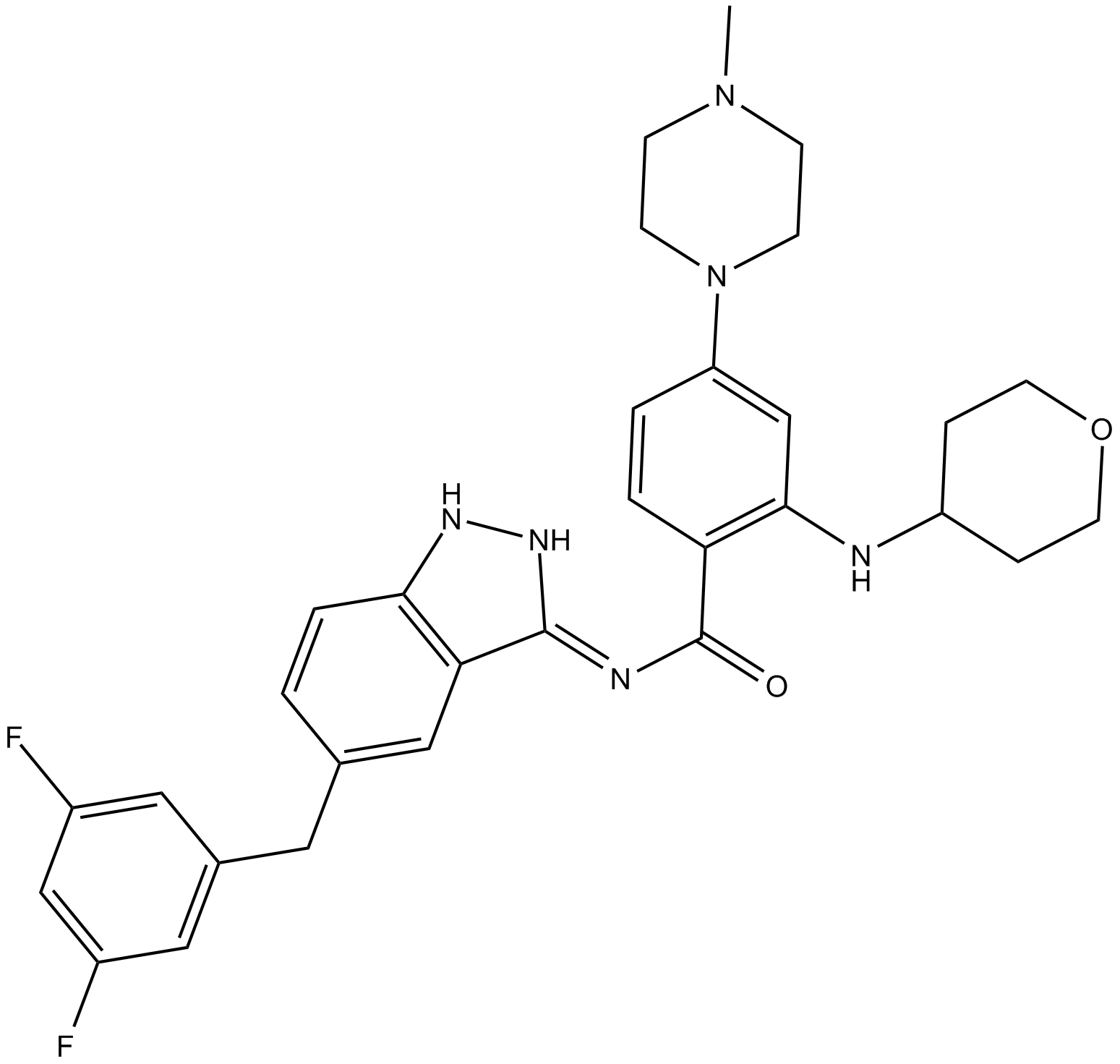
-
GC65380
Envonalkib
Envonalkib is a potent and orally active inhibitor of ALK, with IC50s of 1.96 nM, 35.1 nM, and 61.3 nM for WT and mutated L1196M and G1269S-ALK. Envonalkib can be used for the research of non-small cell lung cancer.

-
GC33048
Epertinib (S-22611)
Epertinib (S-22611) (S-22611) is a potent, oral, reversible, and selective tyrosine kinase inhibitor of EGFR, HER2 and HER4, with IC50s of 1.48 nM, 7.15 nM and 2.49 nM, respectively. Epertinib (S-22611) shows potent antitumor activity.
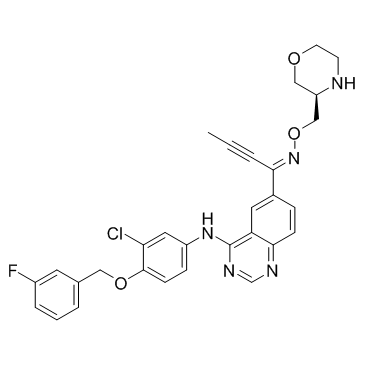
-
GC38350
Epertinib hydrochloride
Epertinib hydrochloride (S-22611 hydrochloride) is a potent, orally active, reversible, and selective tyrosine kinase inhibitor of EGFR, HER2 and HER4, with IC50s of 1.48 nM, 7.15 nM and 2.49 nM, respectively. Epertinib hydrochloride shows potent antitumor activity.
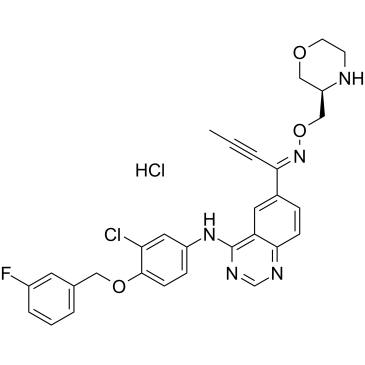
-
GC62384
Epitinib succinate
Epitinib succinate is an orally active and selective epidermal growth factor receptor tyrosine kinase inhibitor (EGFR-TKI) designed for optimal brain penetration. Epitinib succinate can be used for the research of cancer.
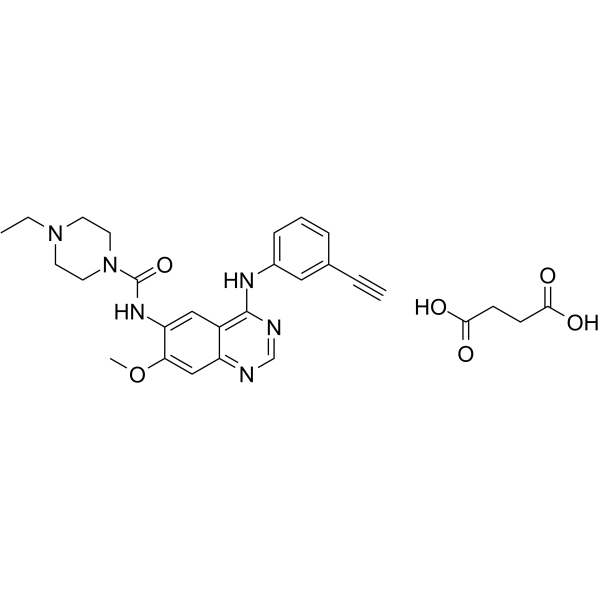
-
GC63390
EPQpYEEIPIYL
EPQpYEEIPIYL, a phosphopeptide, is a Src homology 2 (SH2) domain ligand. EPQpYEEIPIYL activates Src family members (e.g. Lck, Hck, Fyn) by binding to SH2 domains.
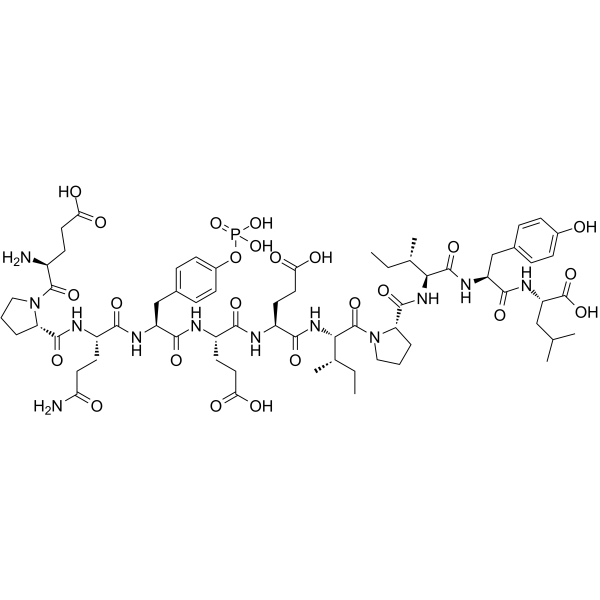
-
GC12958
ER 27319 maleate
Selective inhibitor of Syk kinase
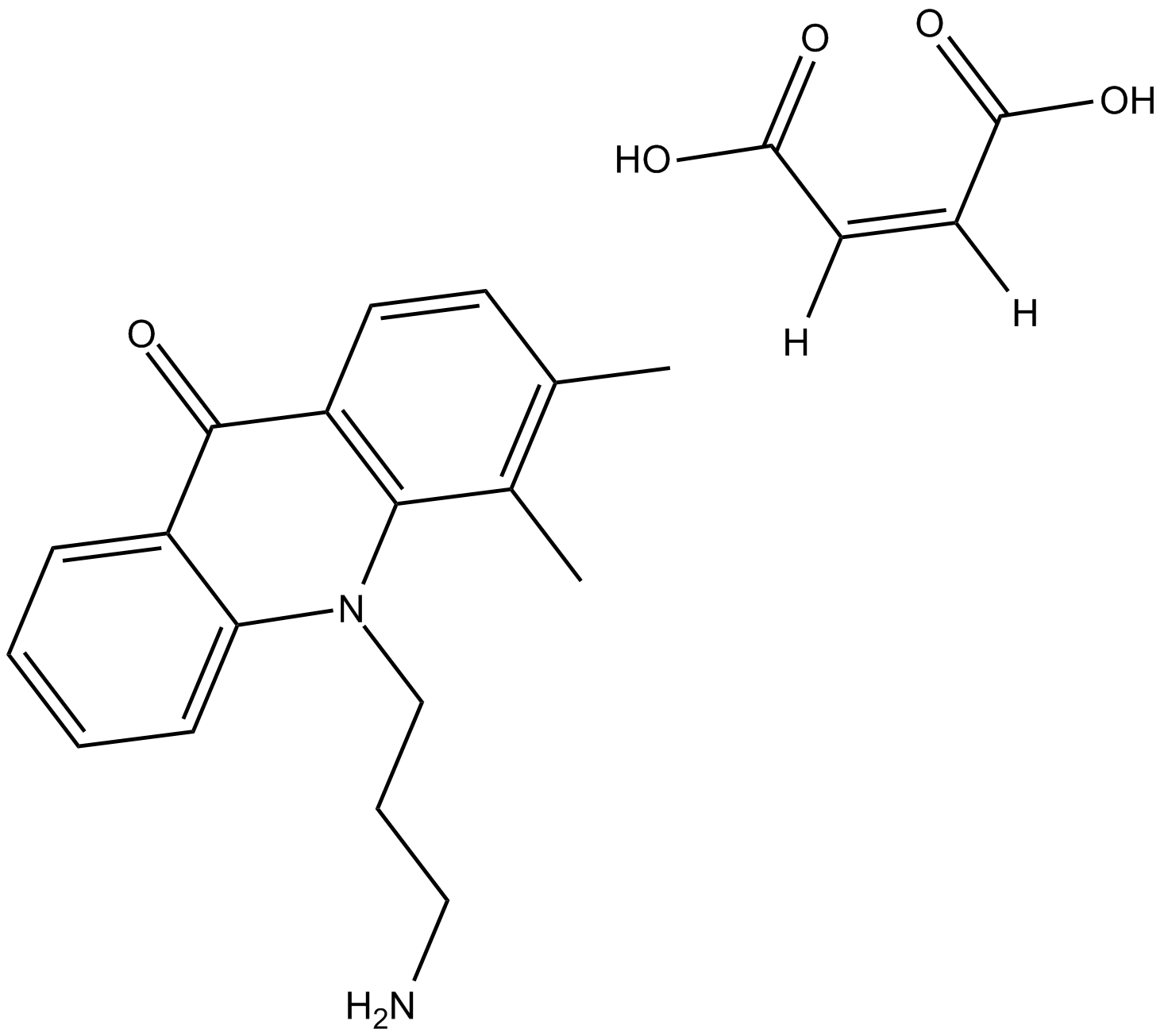
-
GC52516
Erbstatin
A tyrosine kinase inhibitor
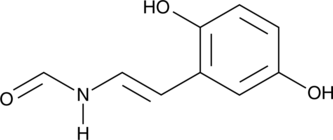
-
GC19142
Erdafitinib
A pan-FGFR tyrosine kinase inhibitor
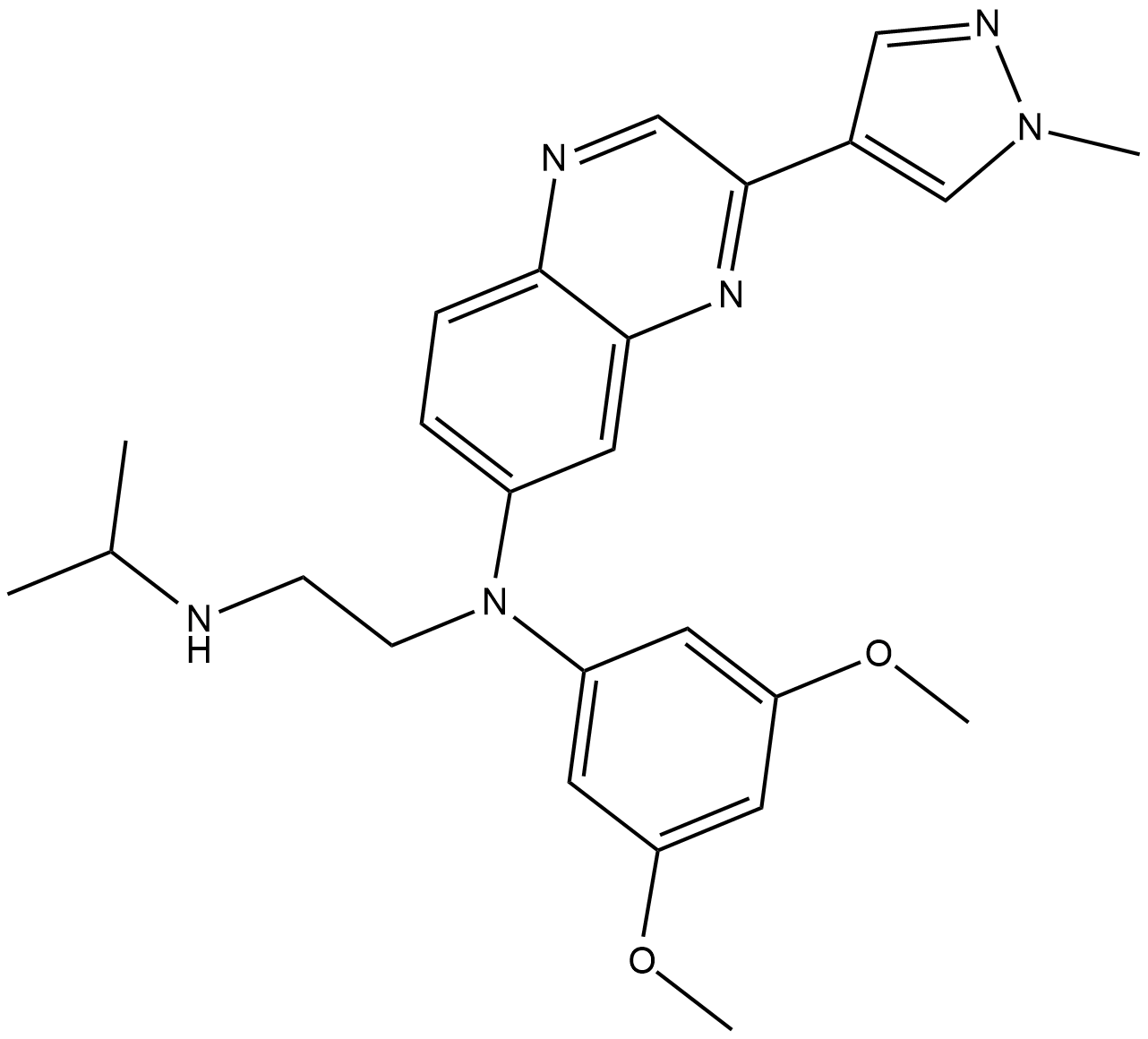
-
GC10627
Erlotinib
An EGFR tyrosine kinase inhibitor
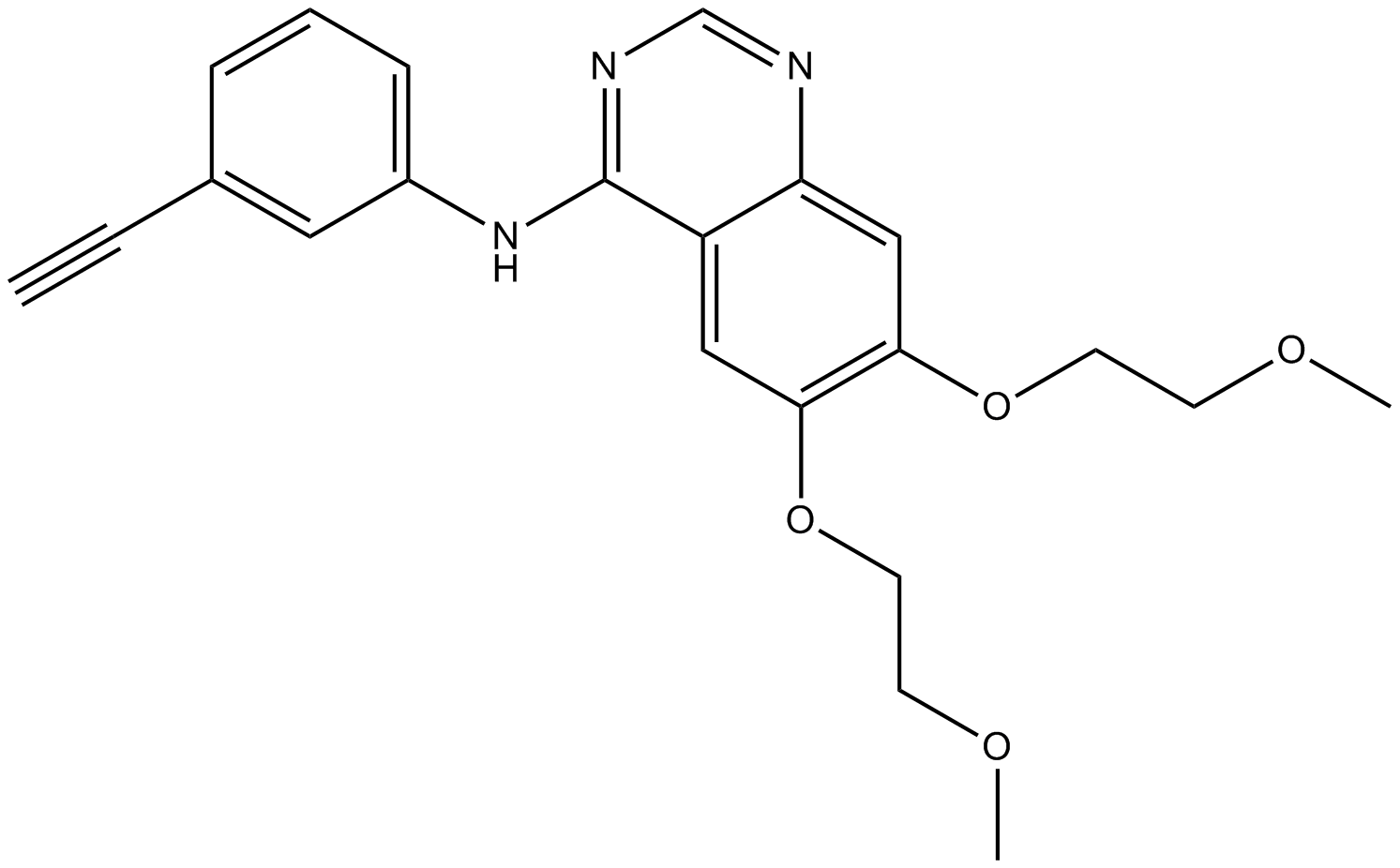
-
GC60154
Erlotinib D6
Erlotinib D6 (CP-358774 D6) is a deuterium labeled Erlotinib (CP-358774). Erlotinib is a directly acting inhibitor EGFR tyrosine kinase inhibitor with an IC50 of 2 nM for human EGFR.
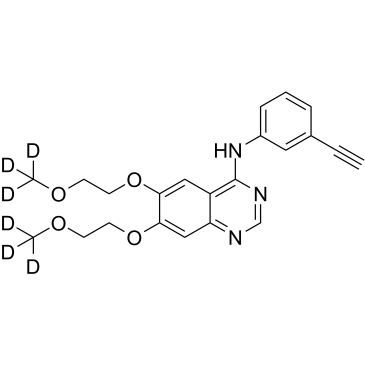
-
GC15600
Erlotinib Hydrochloride
An EGFR tyrosine kinase inhibitor
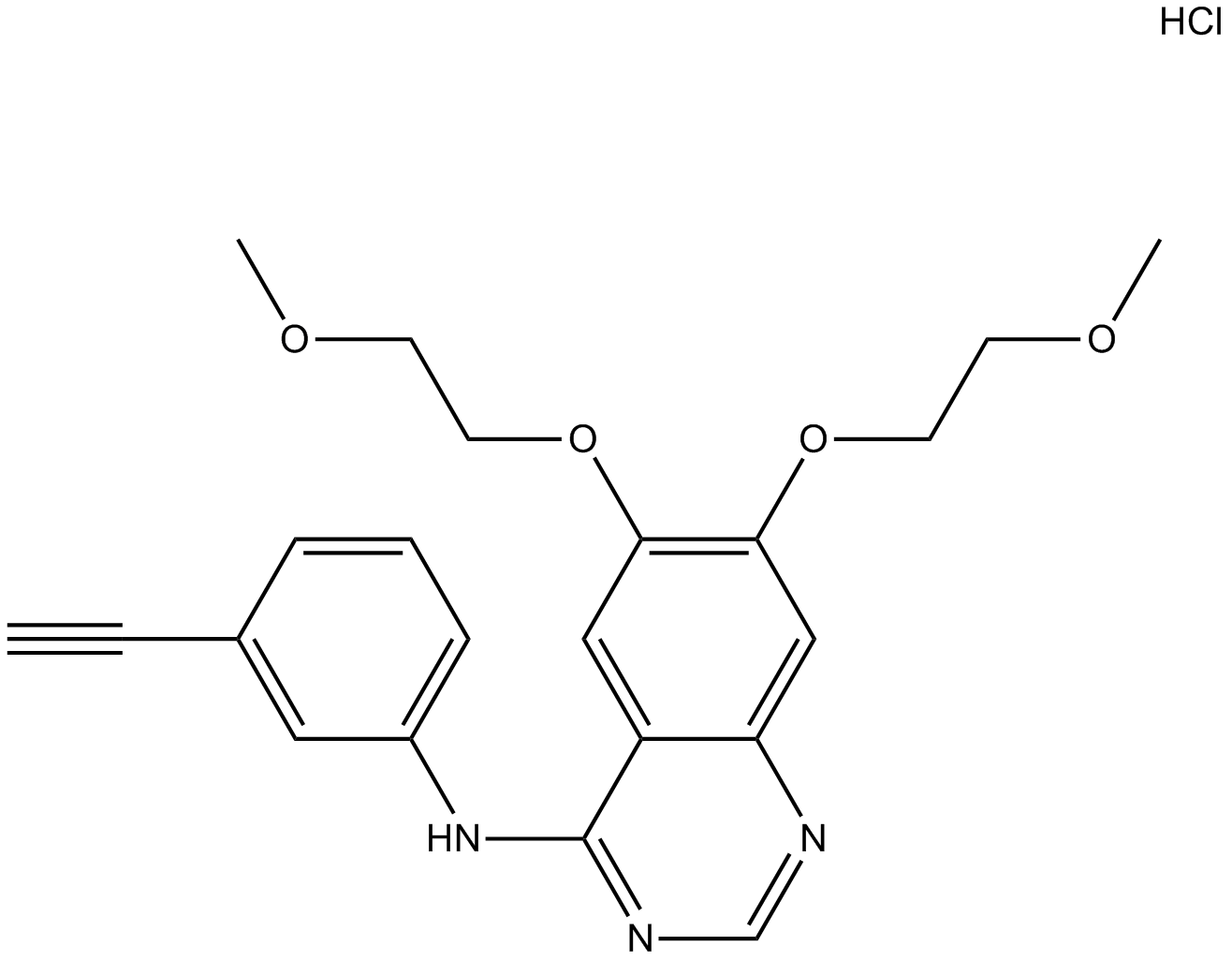
-
GC36003
Erlotinib mesylate
EGFR inhibitor
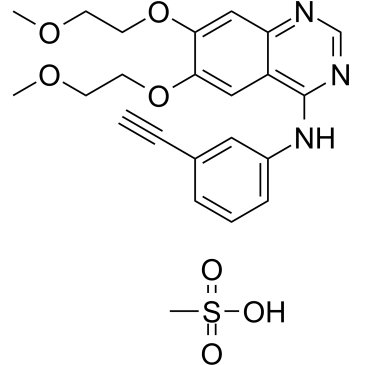
-
GC62958
Erlotinib-13C6
Erlotinib-13C6 (CP-358774-13C6) is a 13C-labeled Erlotinib. Erlotinib is a directly acting EGFR tyrosine kinase inhibitor, with an IC50 of 2 nM for human EGFR.
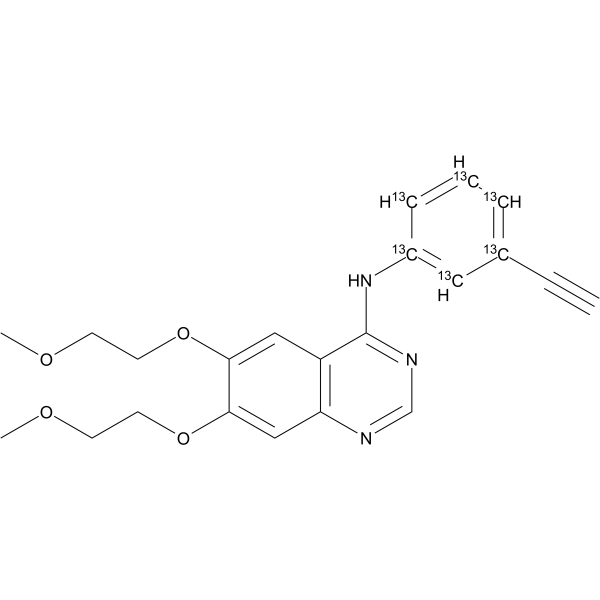
-
GC47303
Erlotinib-d6 (hydrochloride)
An internal standard for the quantification of erlotinib
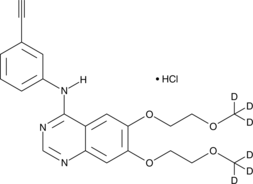
-
GC36021
F-1
F-1 is a potent ALK and ROS1 dual inhibitor, suppresses phospho-ALK and its relative downstream signaling pathways, with IC50s of 2.1 nM, 2.3 nM, 1.3 nM and 3.9 nM for ALKWT, ROS1WT, ALKL1196M and ALKG1202R, respectively.
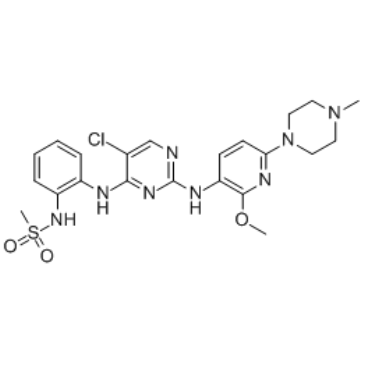
-
GC12174
FAK Inhibitor 14
FAK Inhibitor 14 is a potent and specific inhibitor of focal adhesion kinase (FAK) that inhibits its autophosphorylation activity, decreases the viability of cancer cells, and blocks tumor growth.
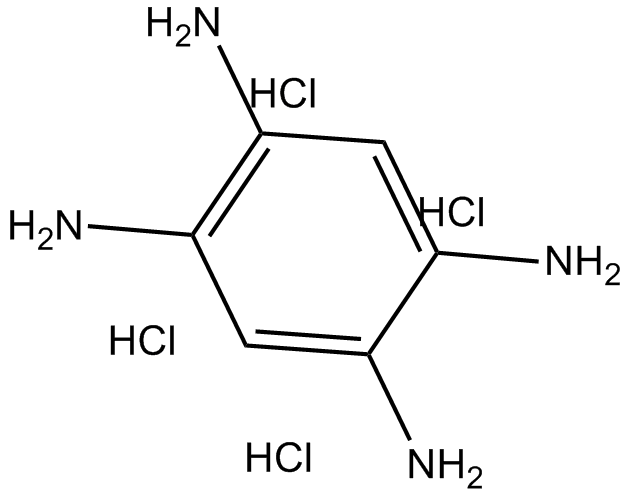
-
GC36025
FAK inhibitor 2
FAK inhibitor 2 is a potent focal adhesion kinase (FAK) inhibitor with an IC50 ?of 0.07?nM, with antitumor and anti-angiogenesis activities.



